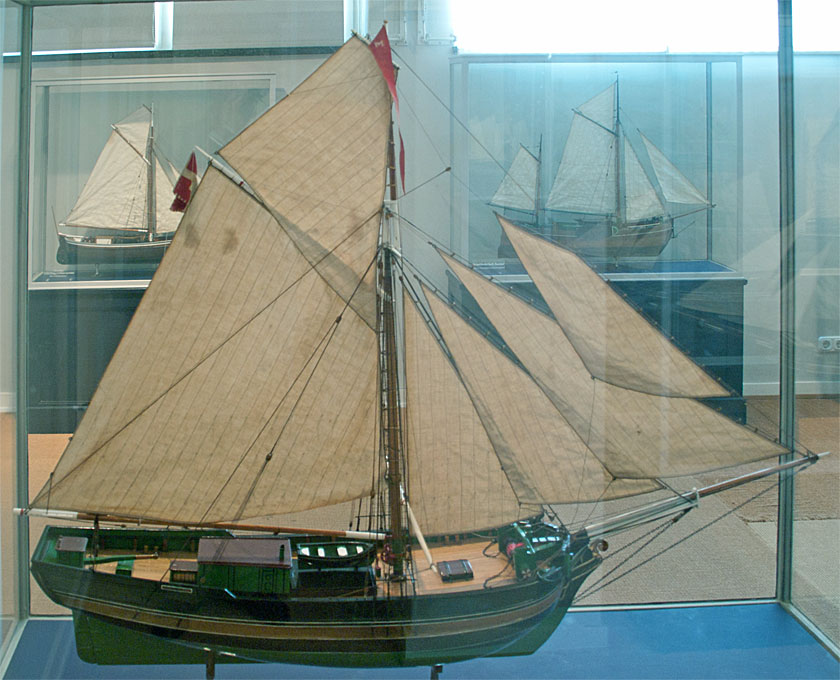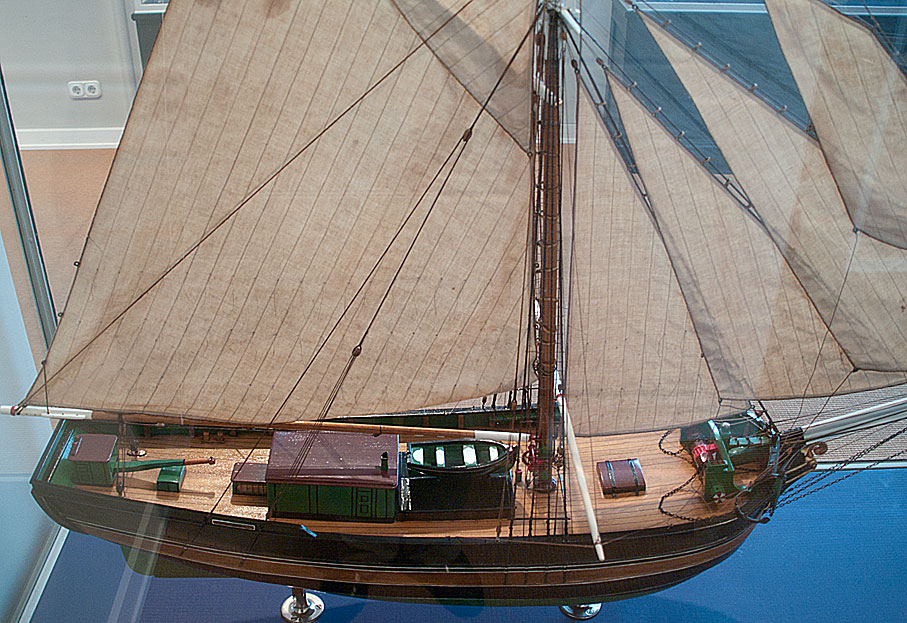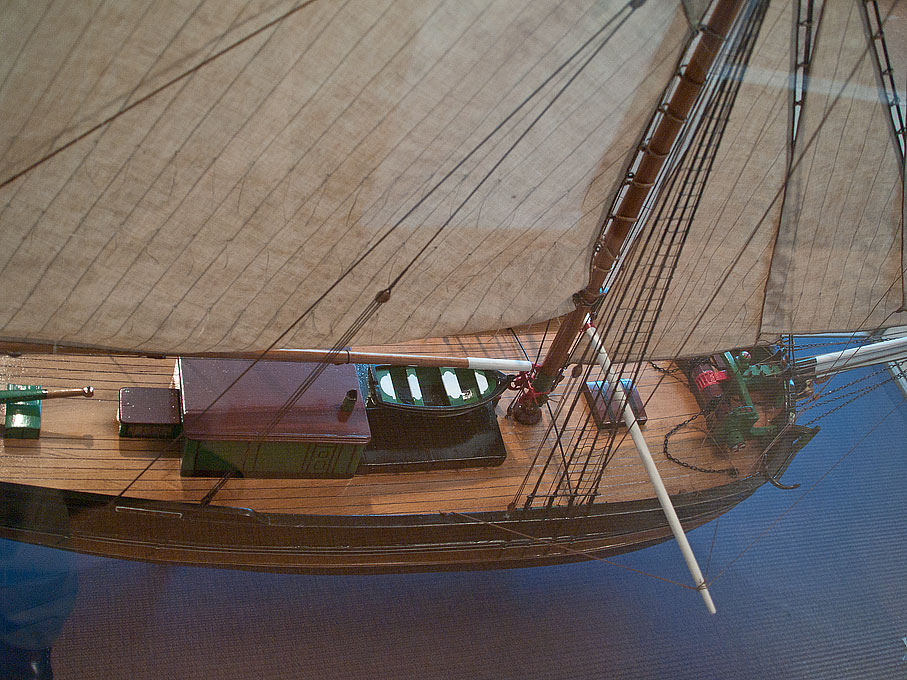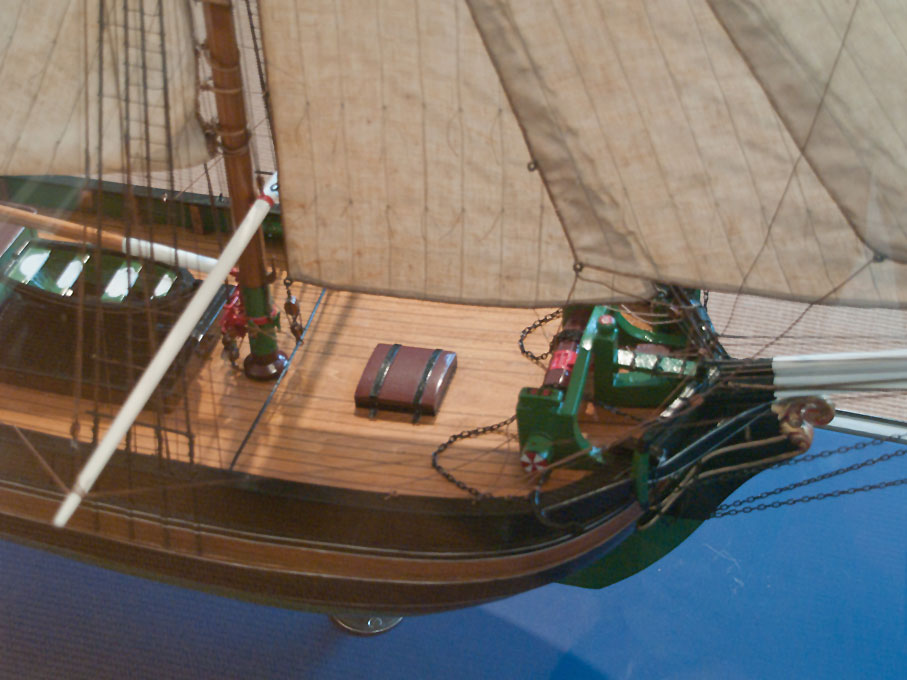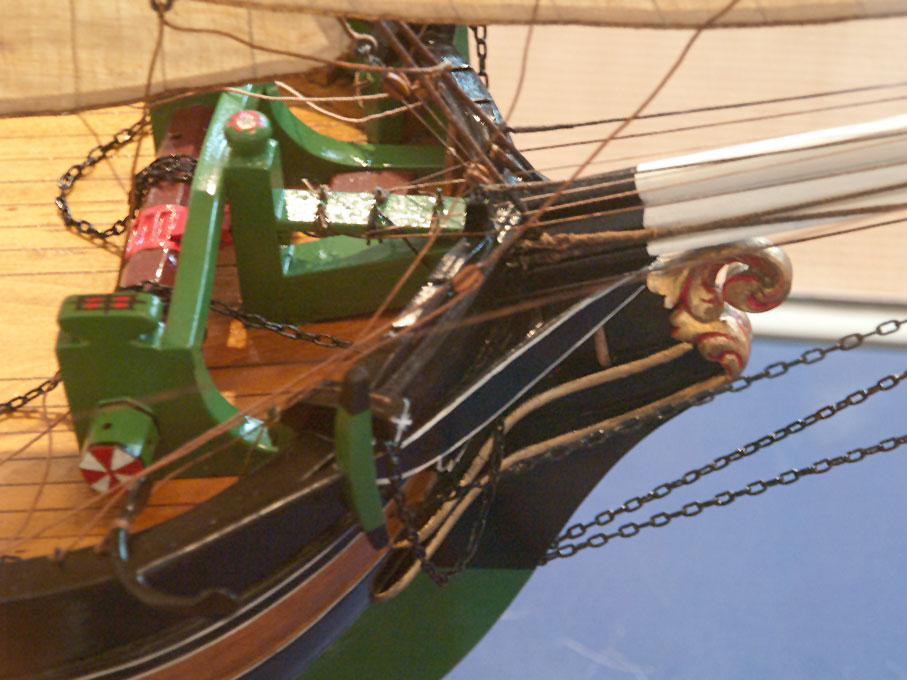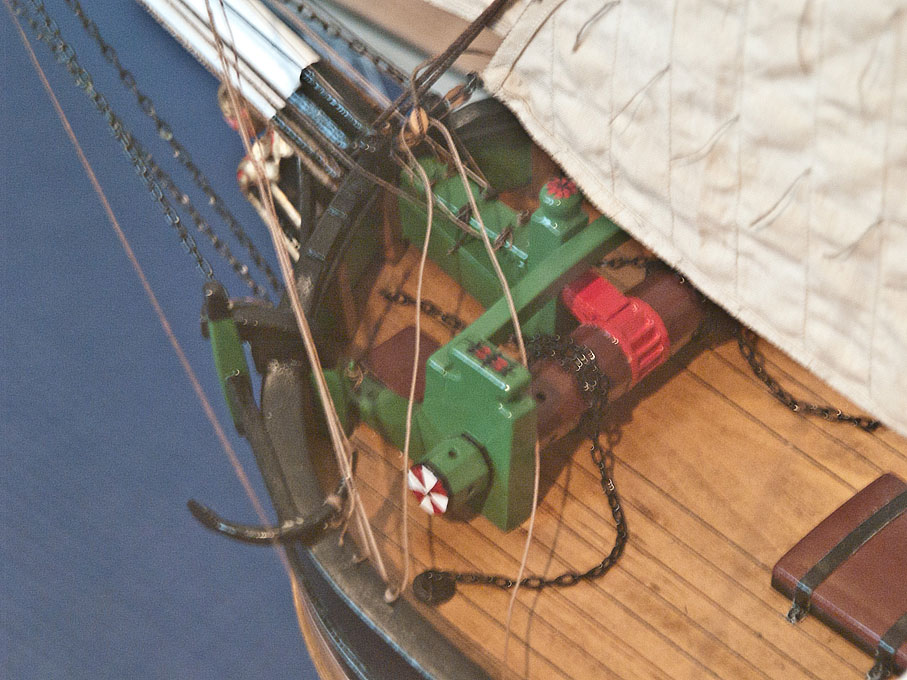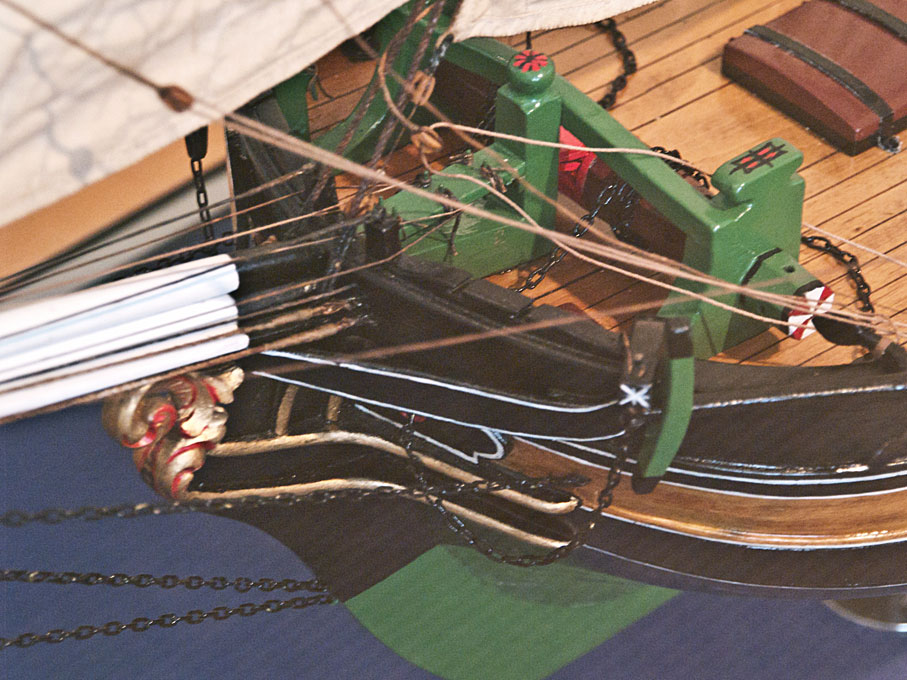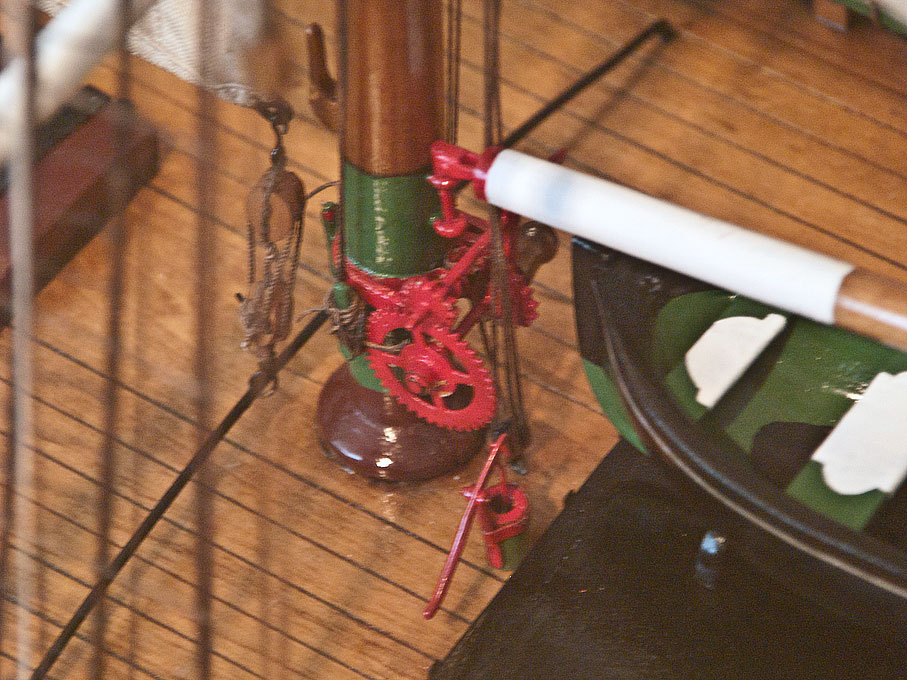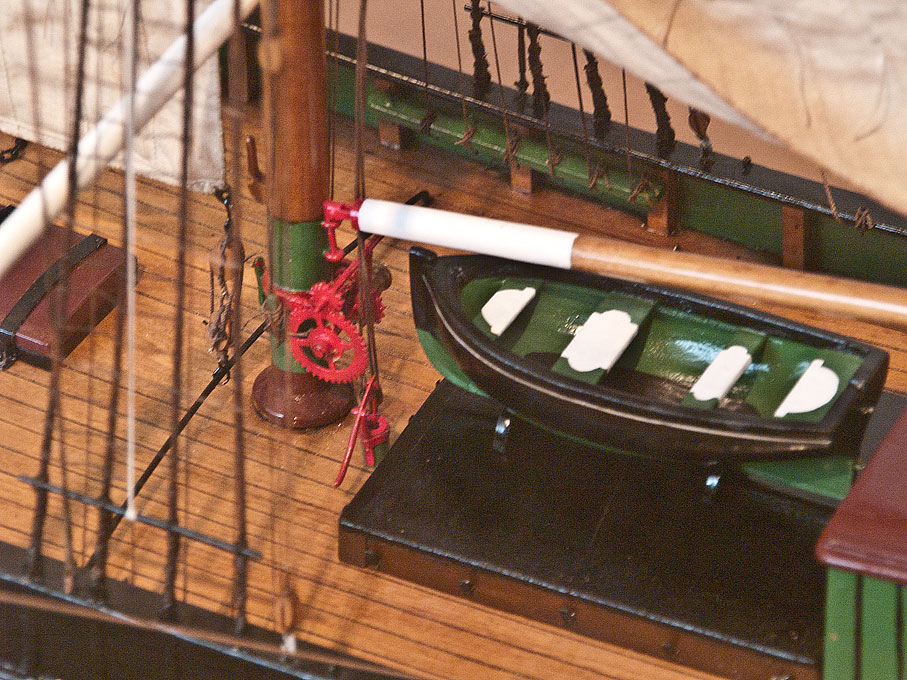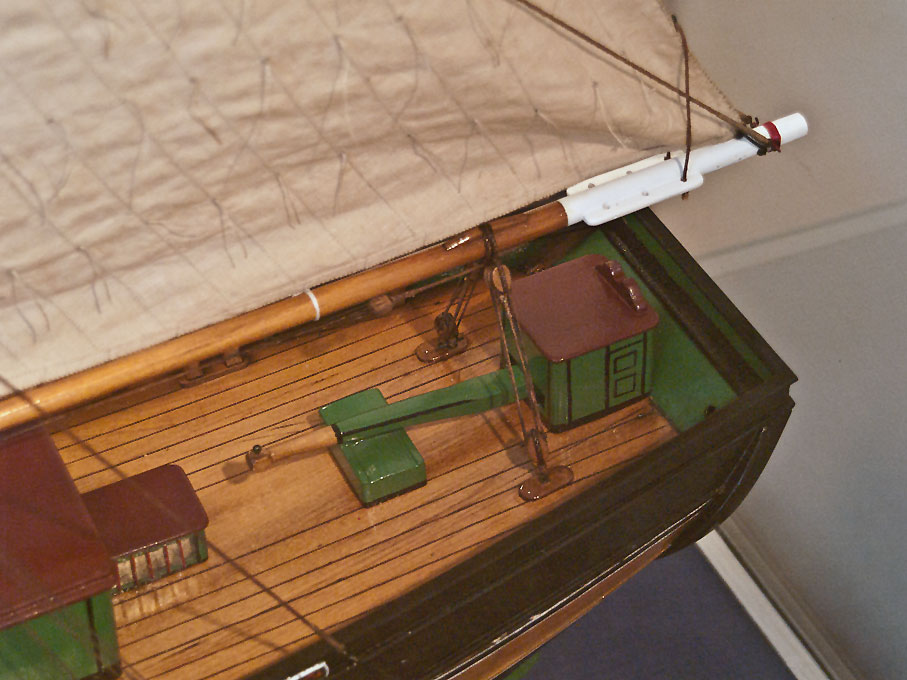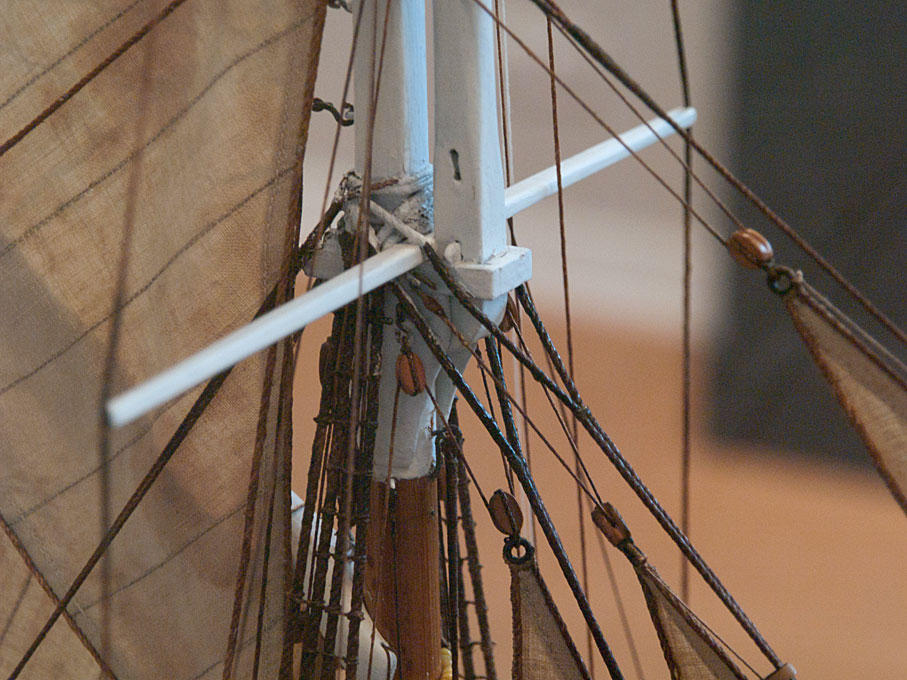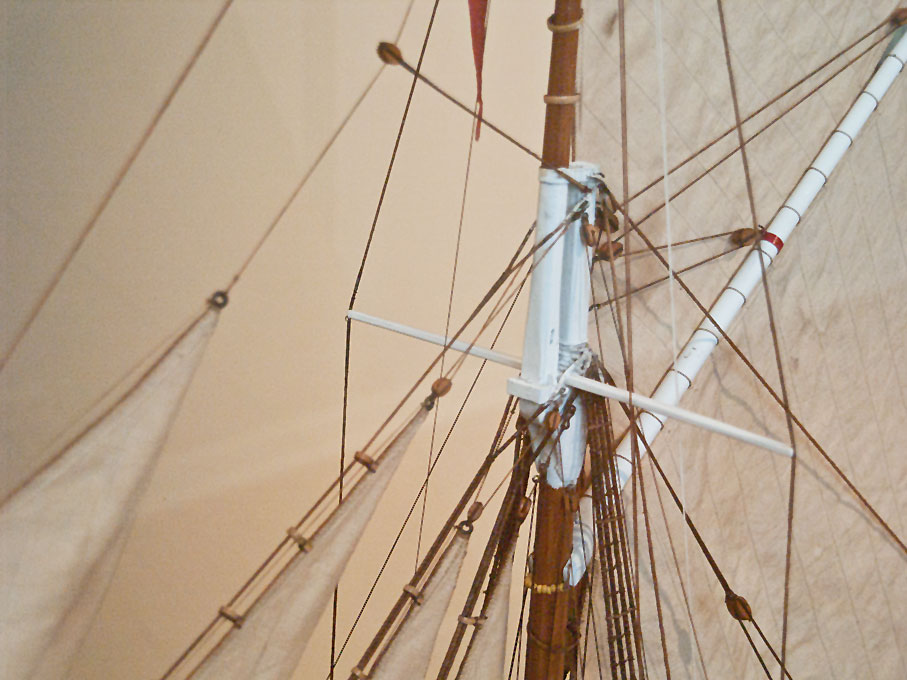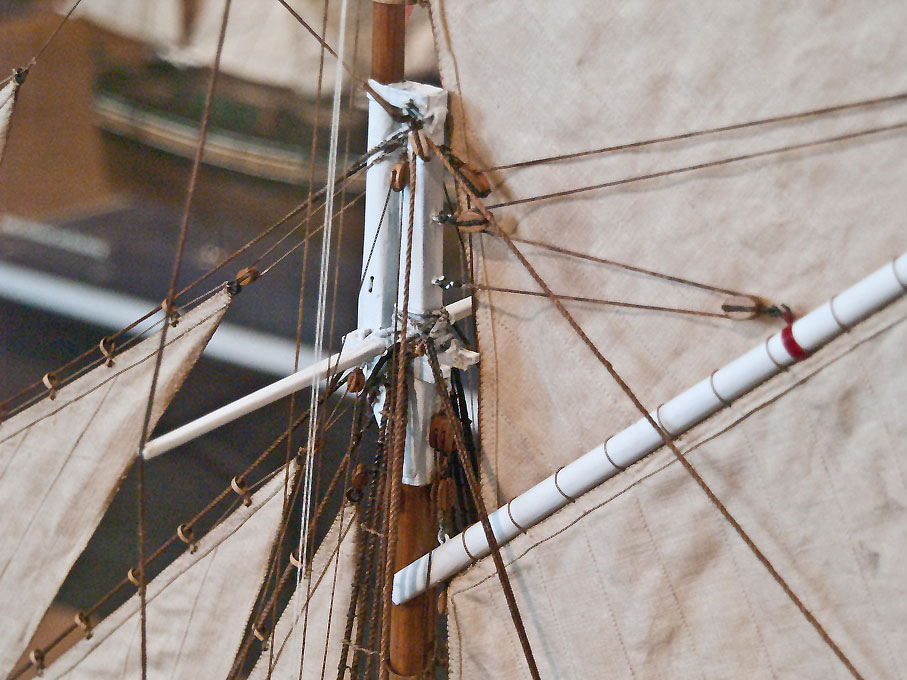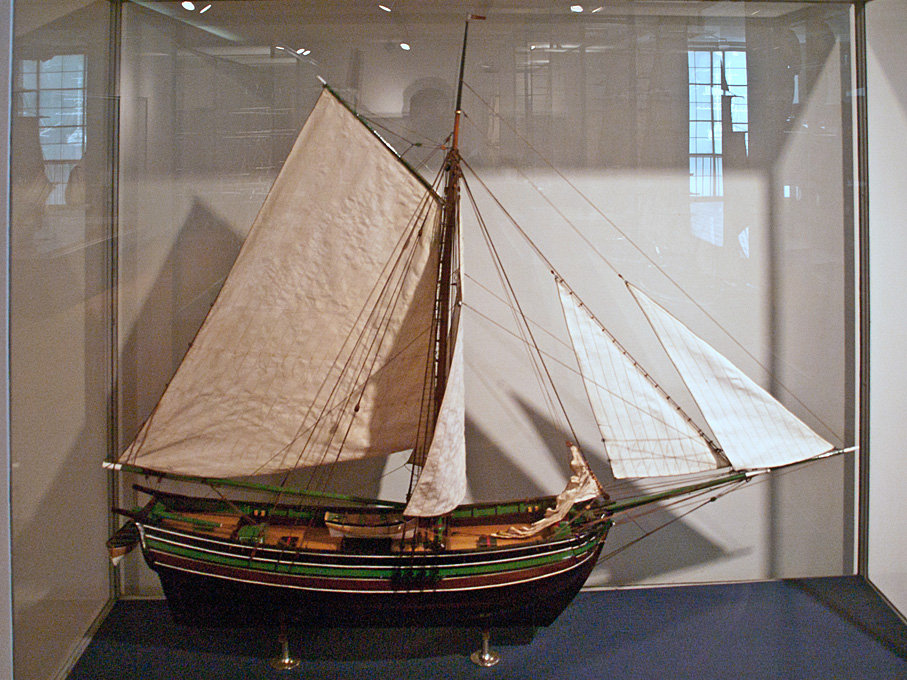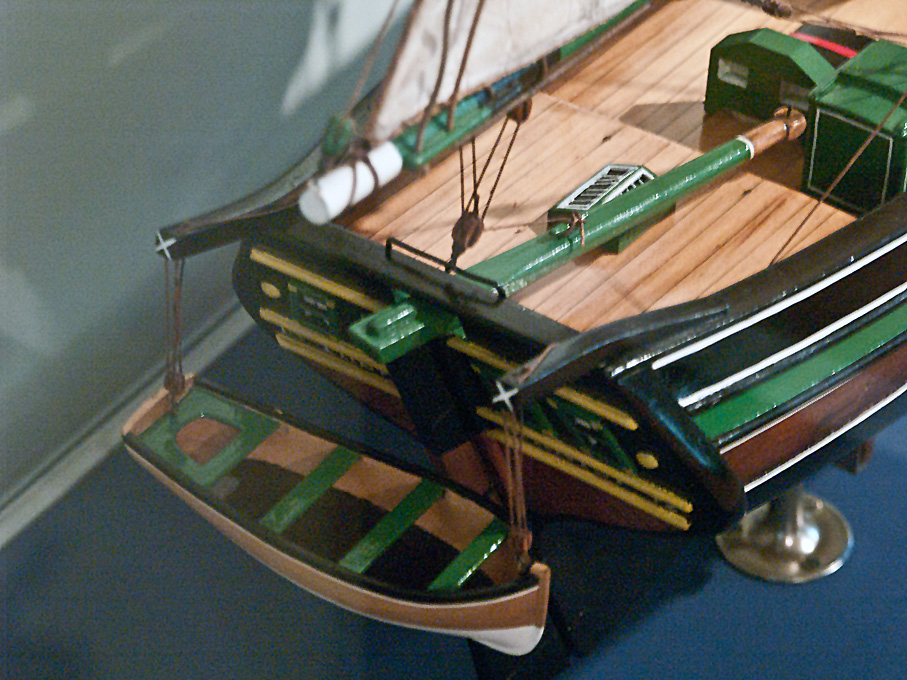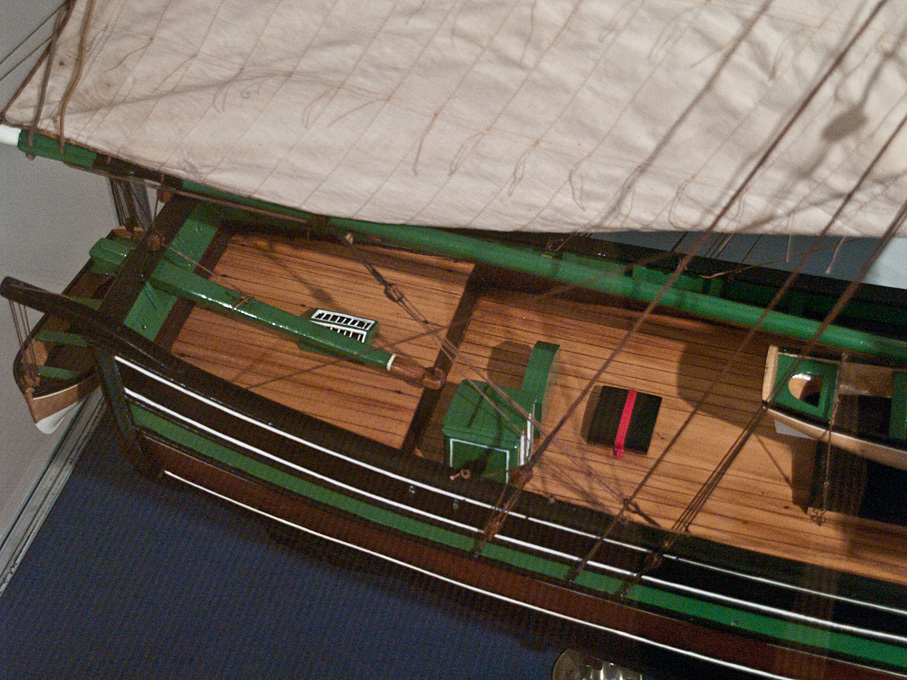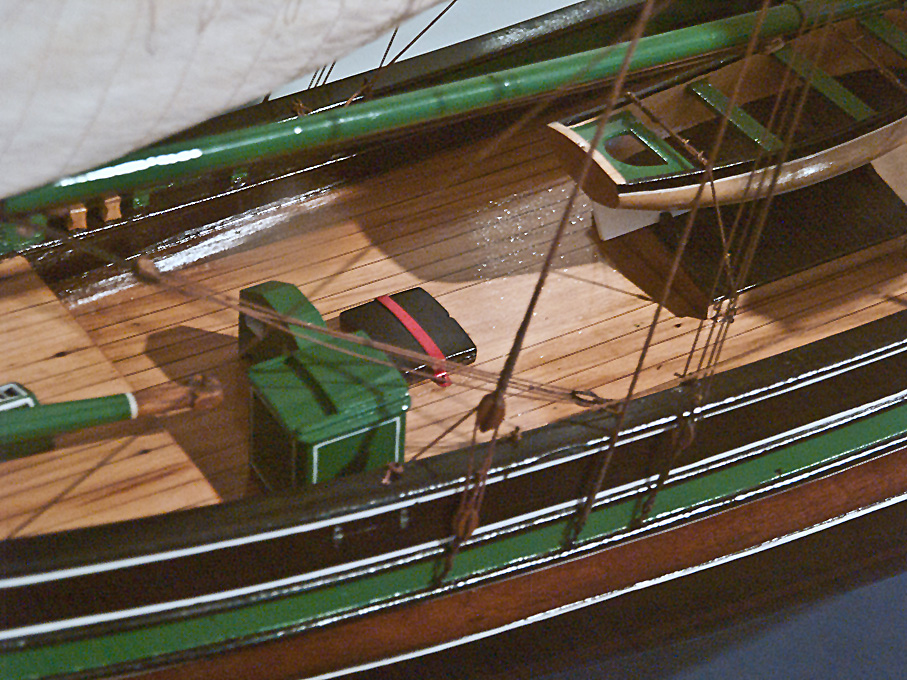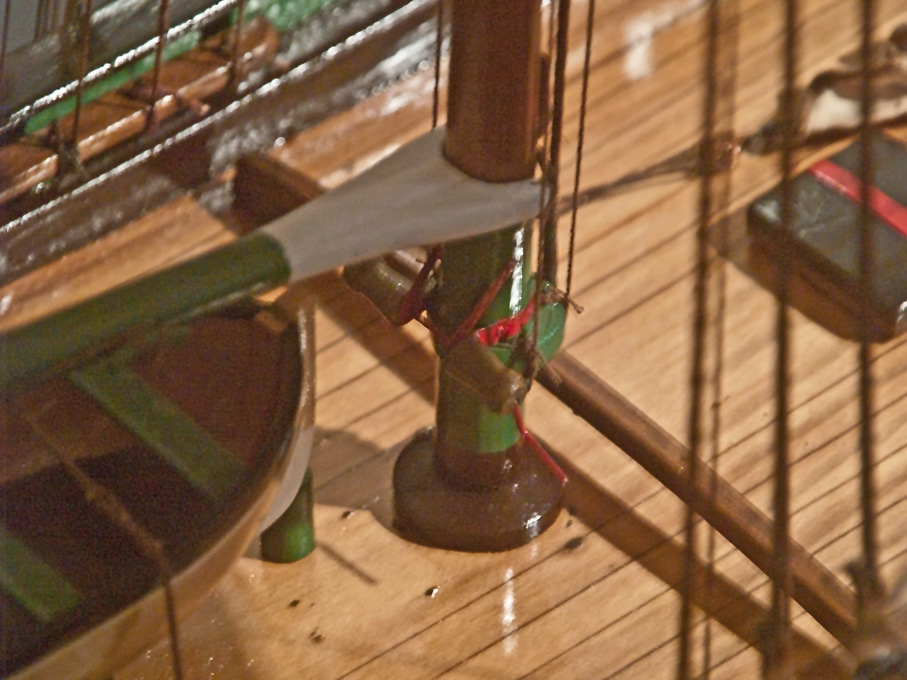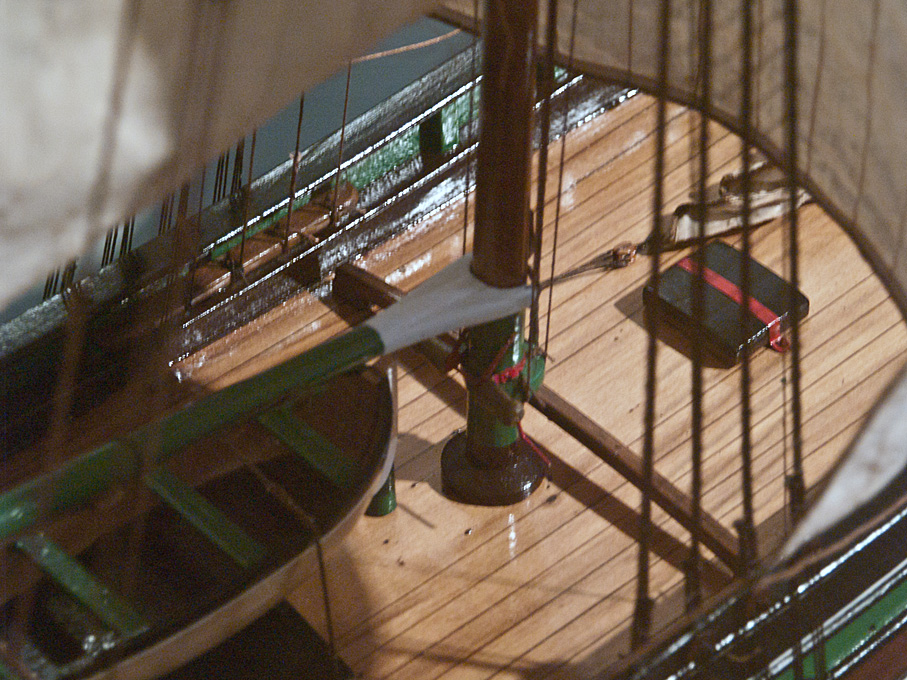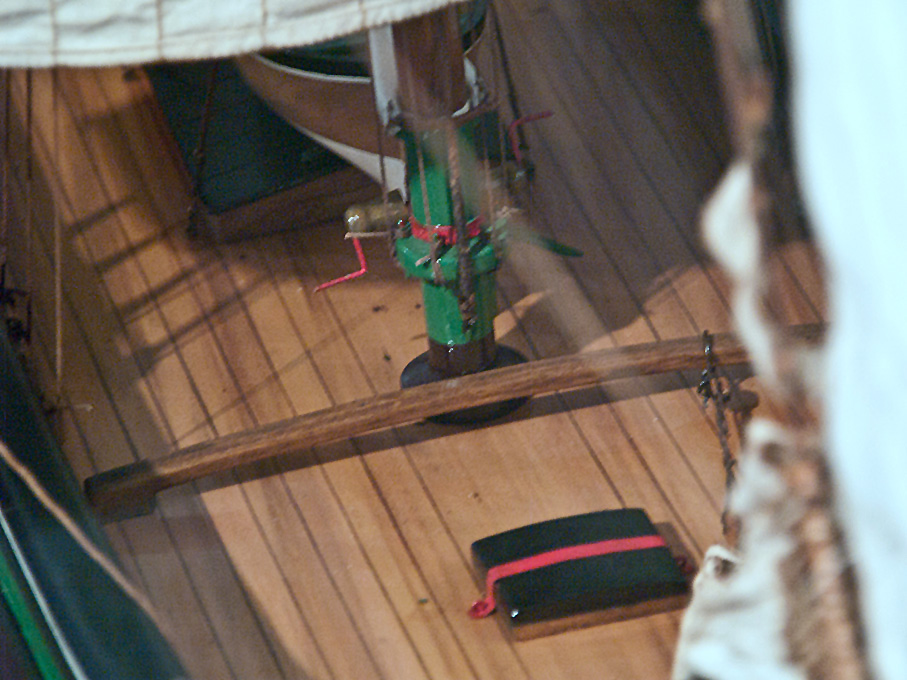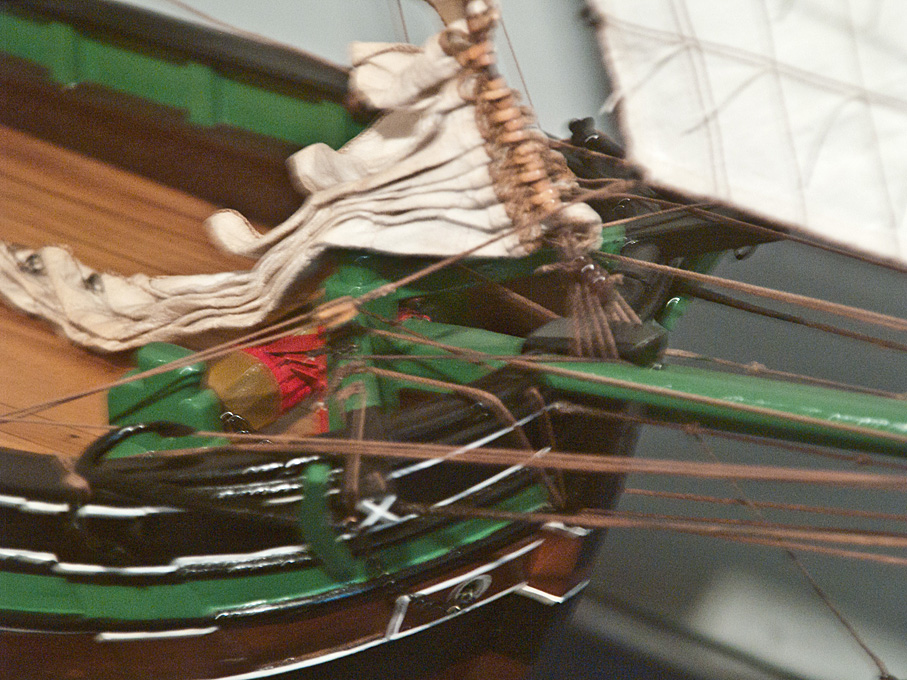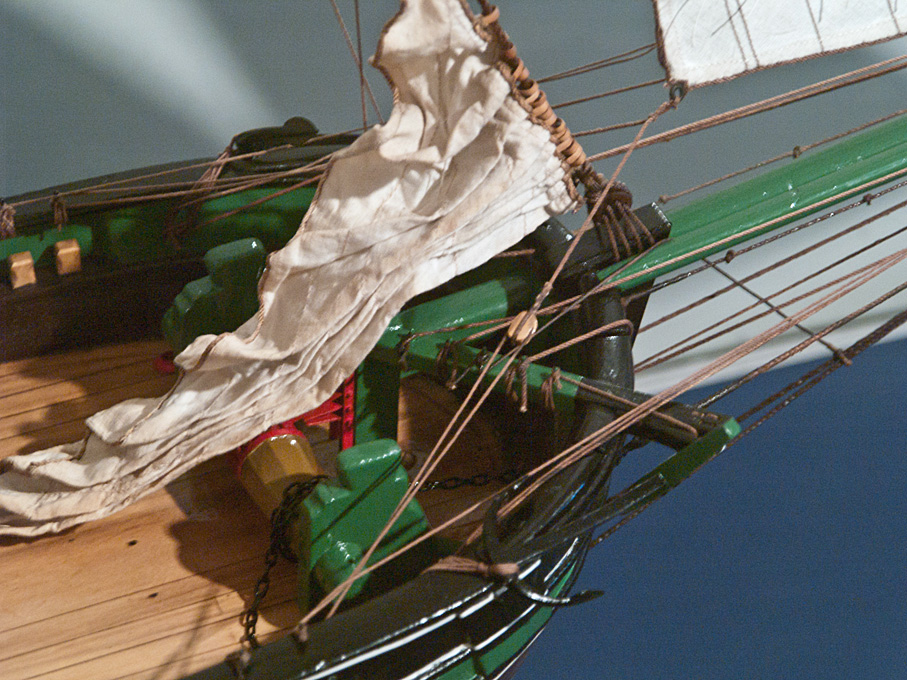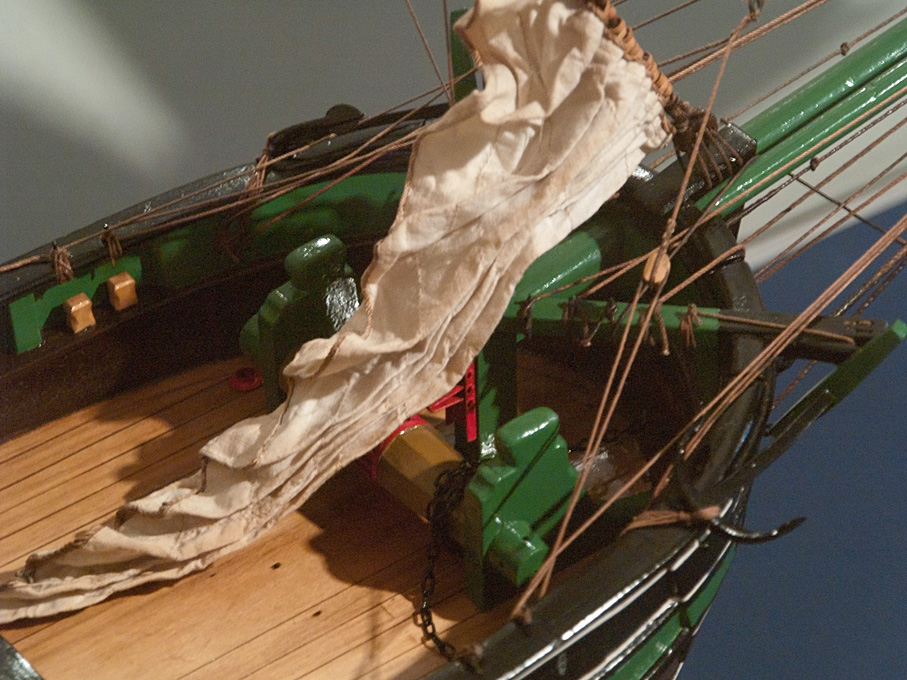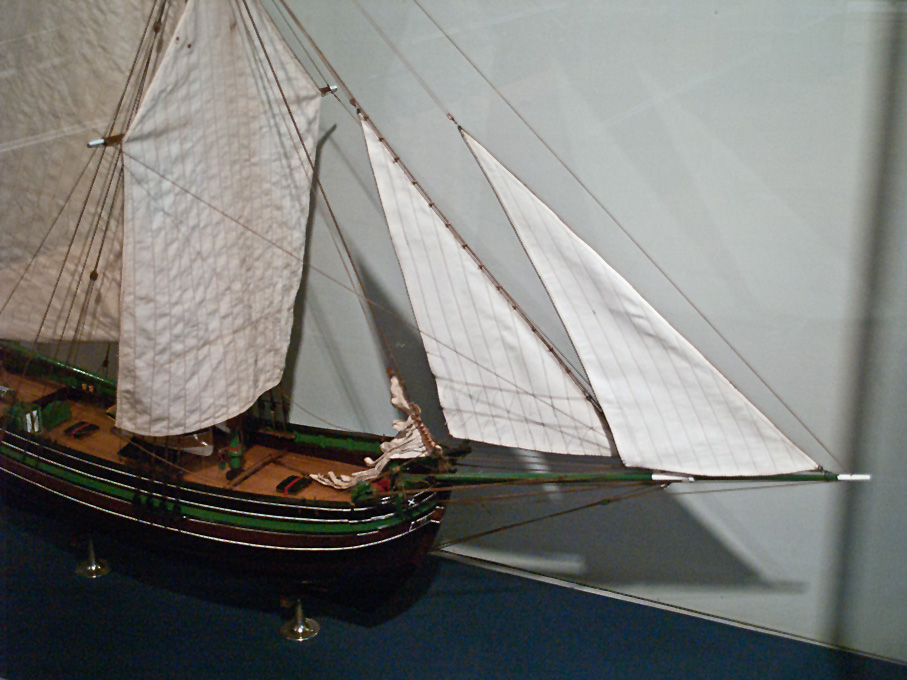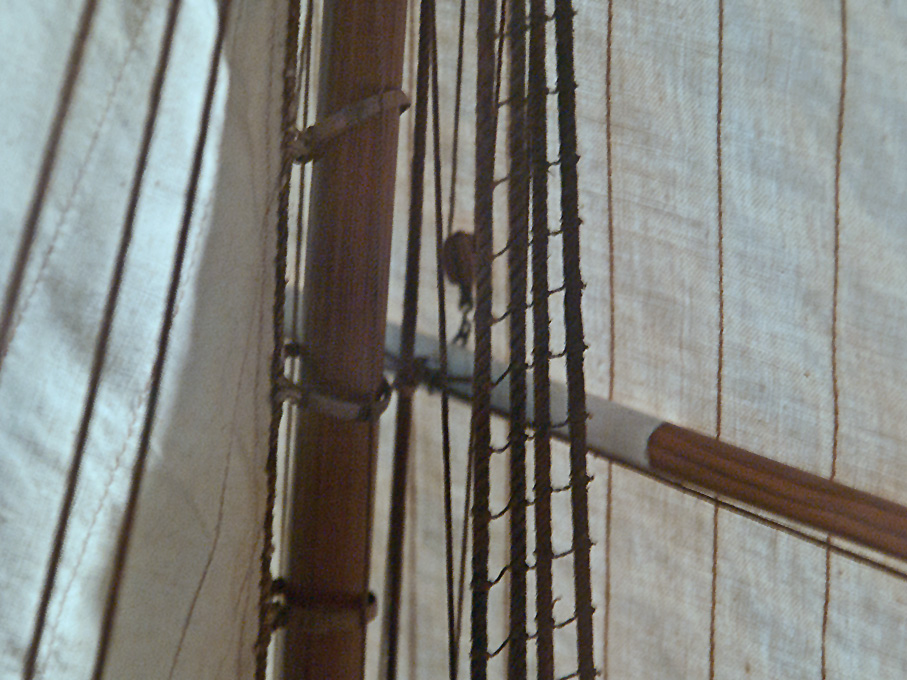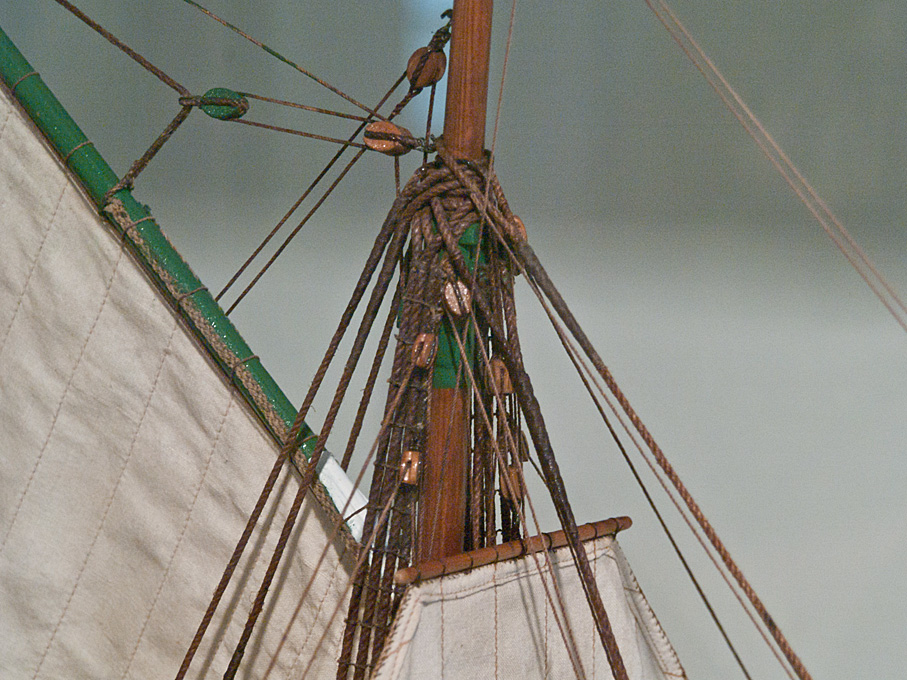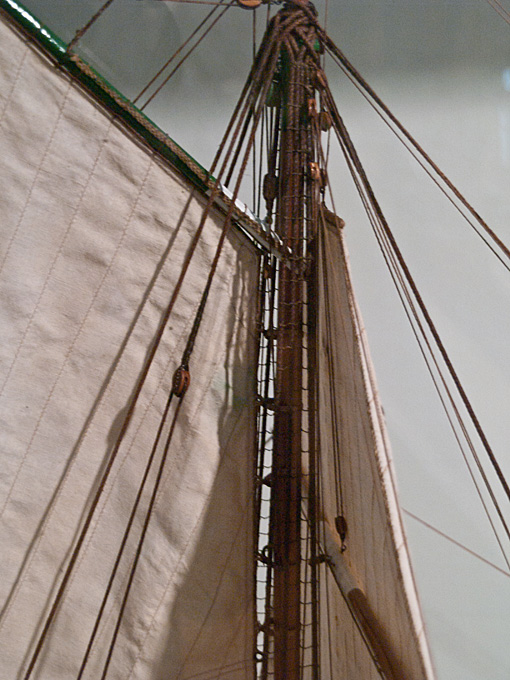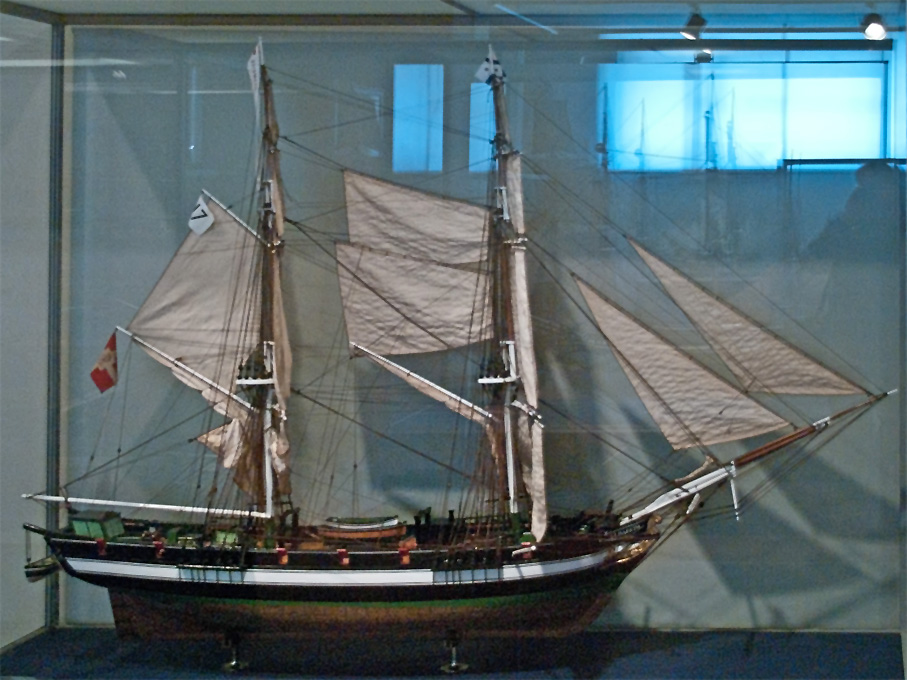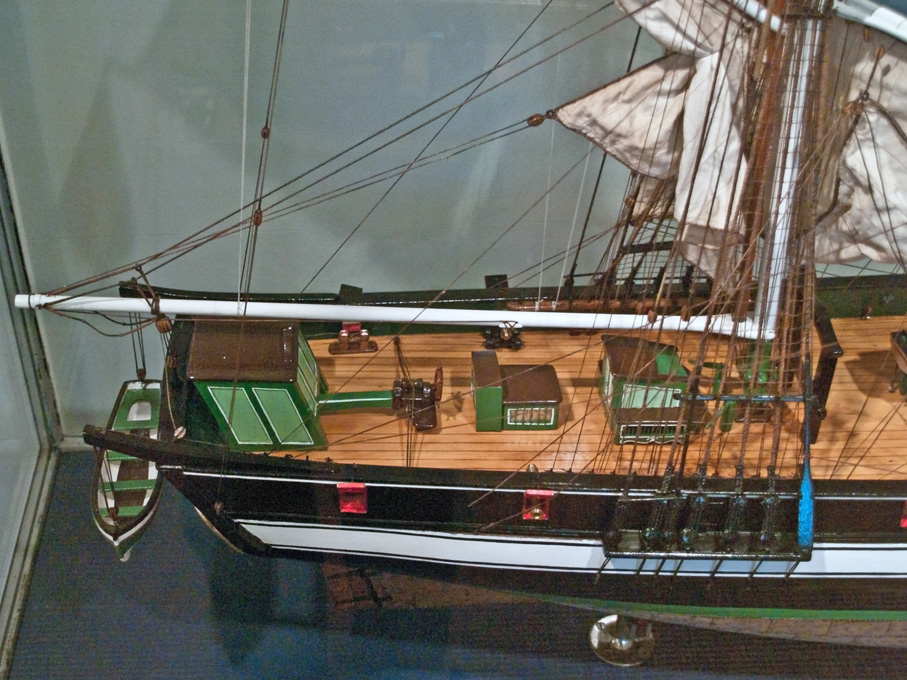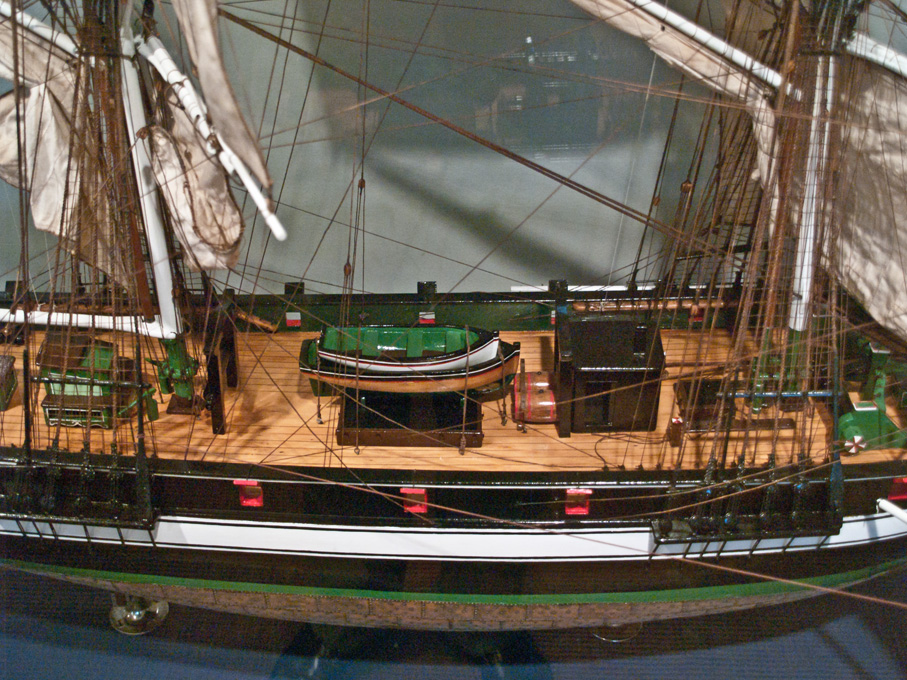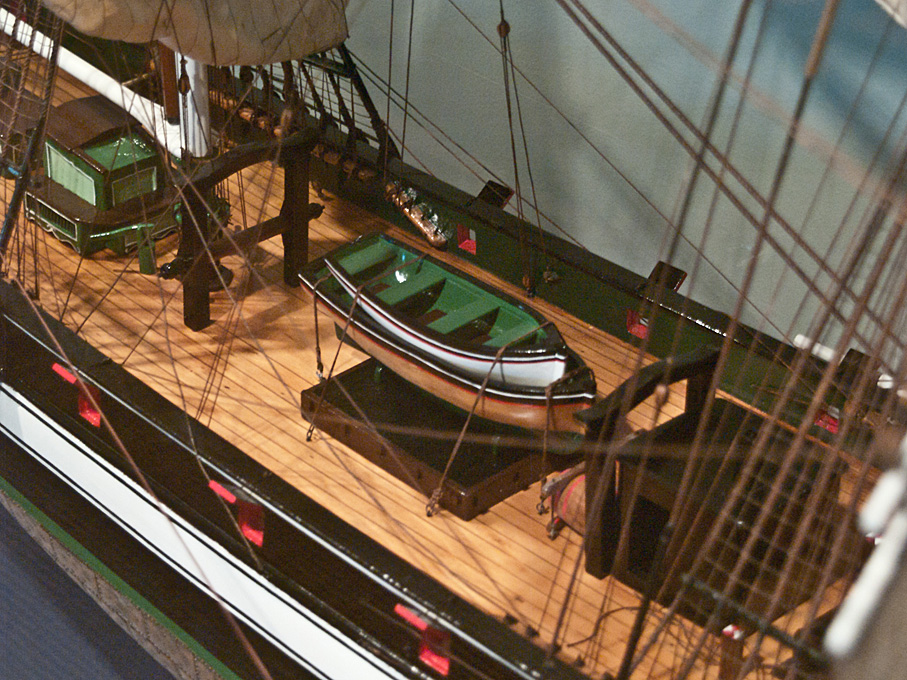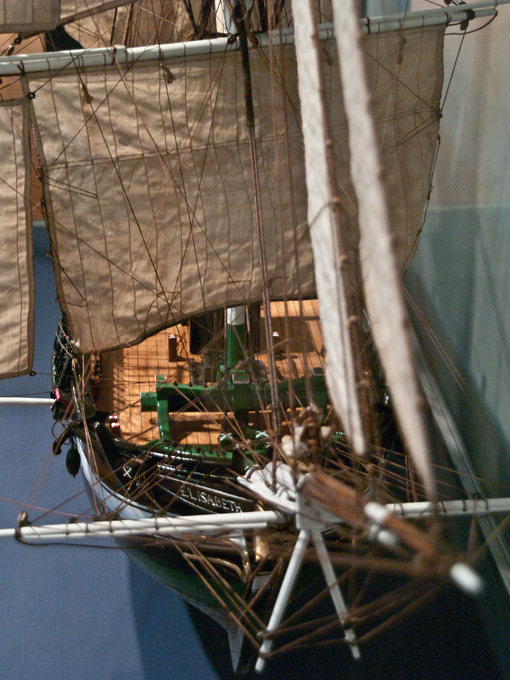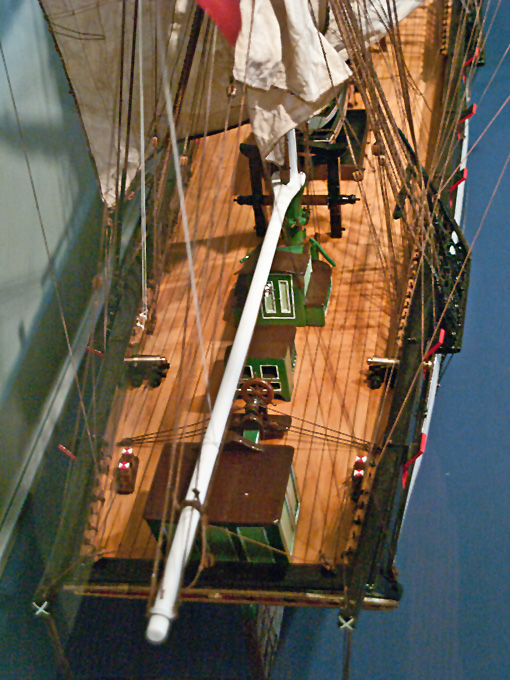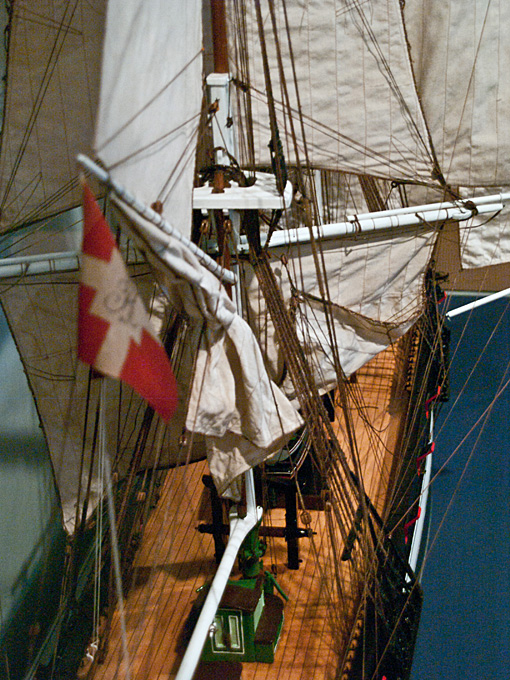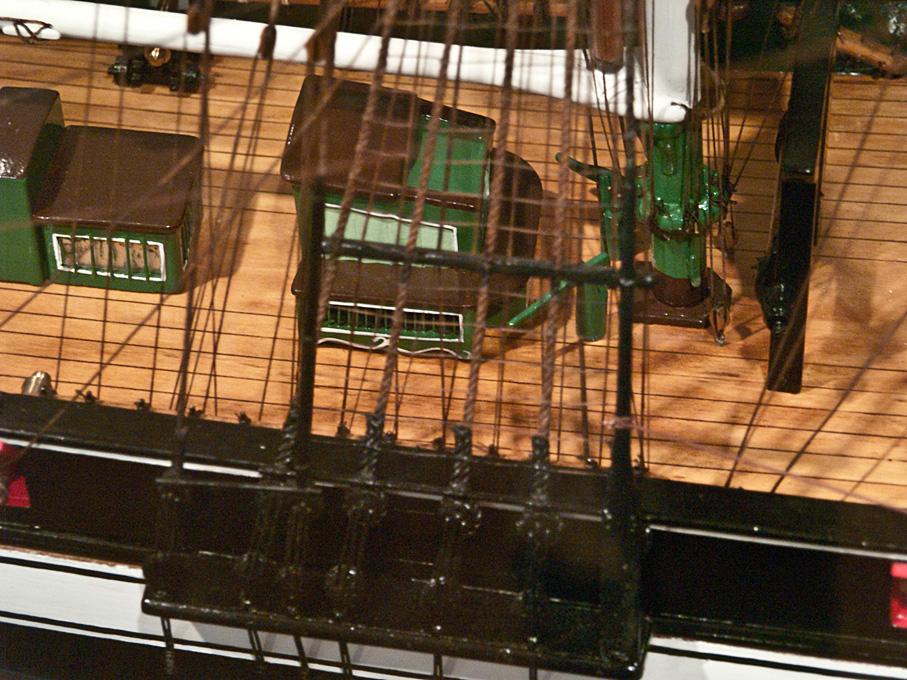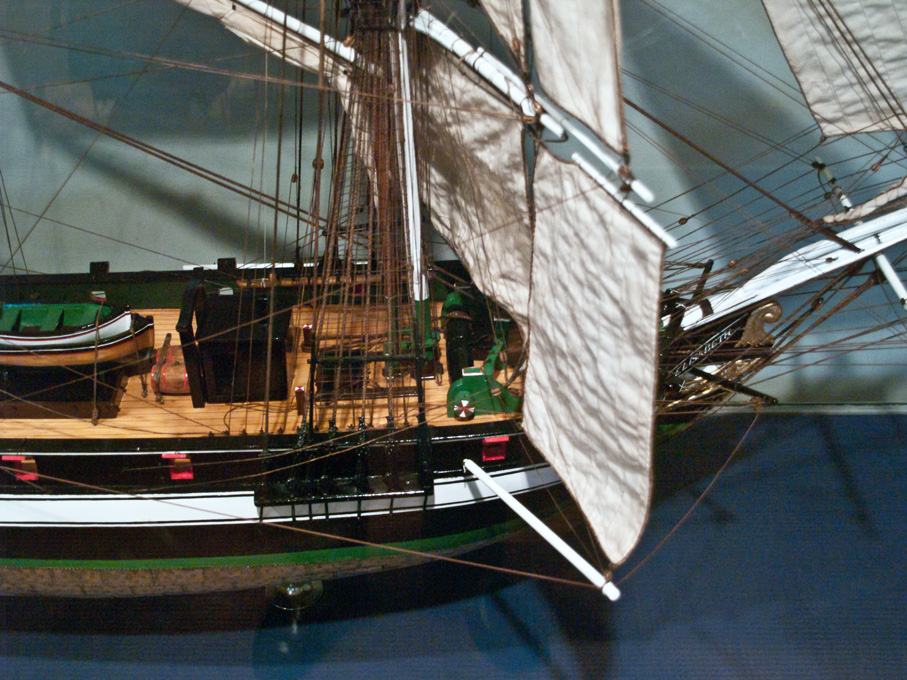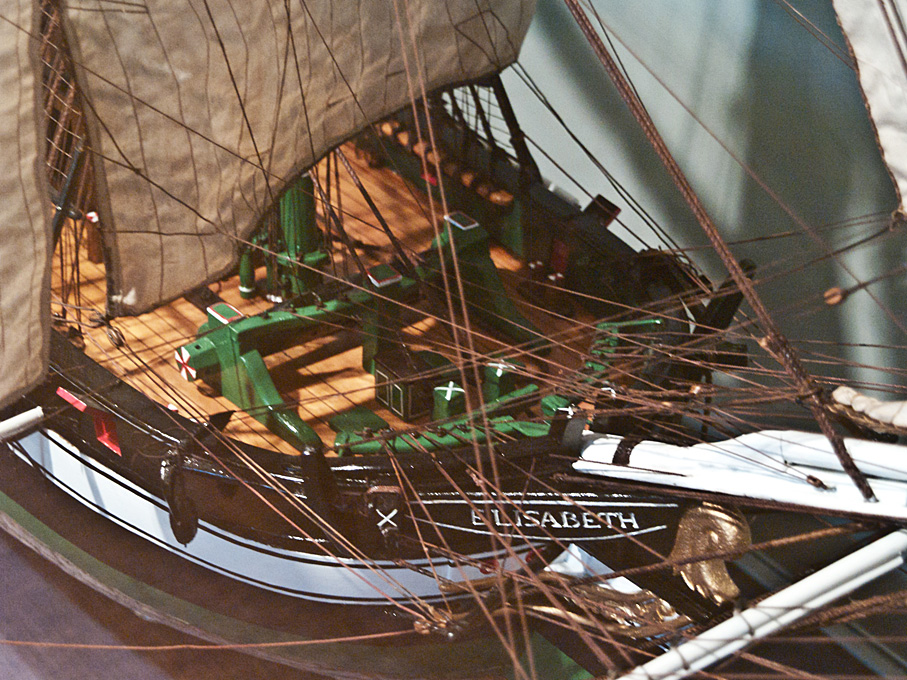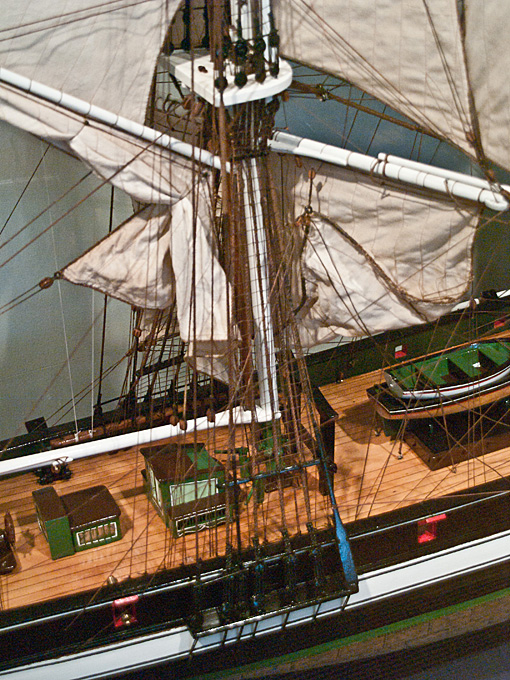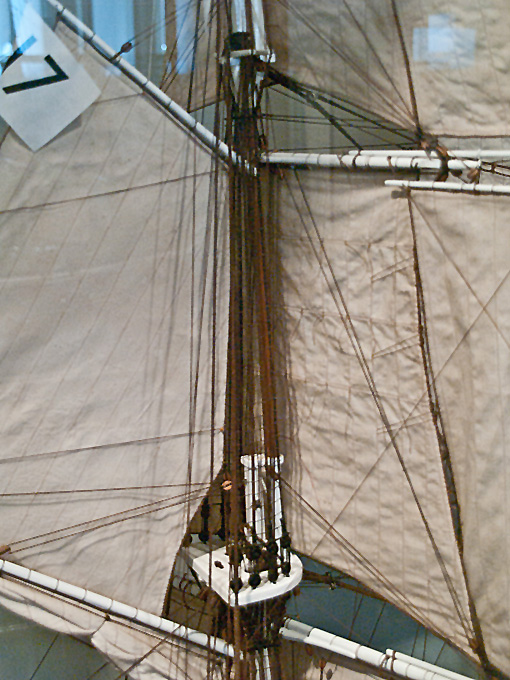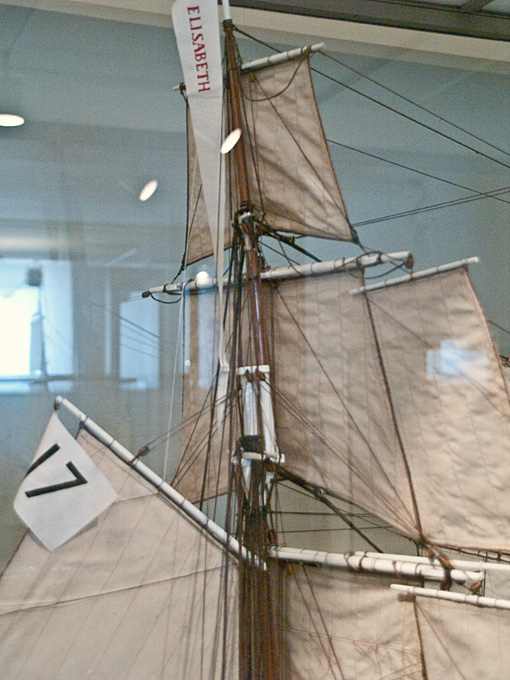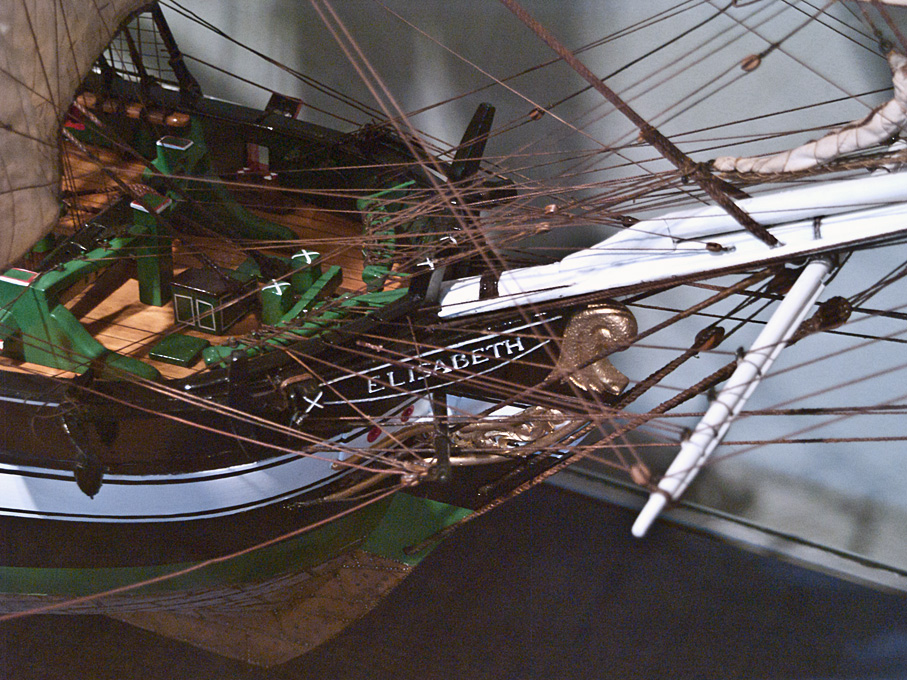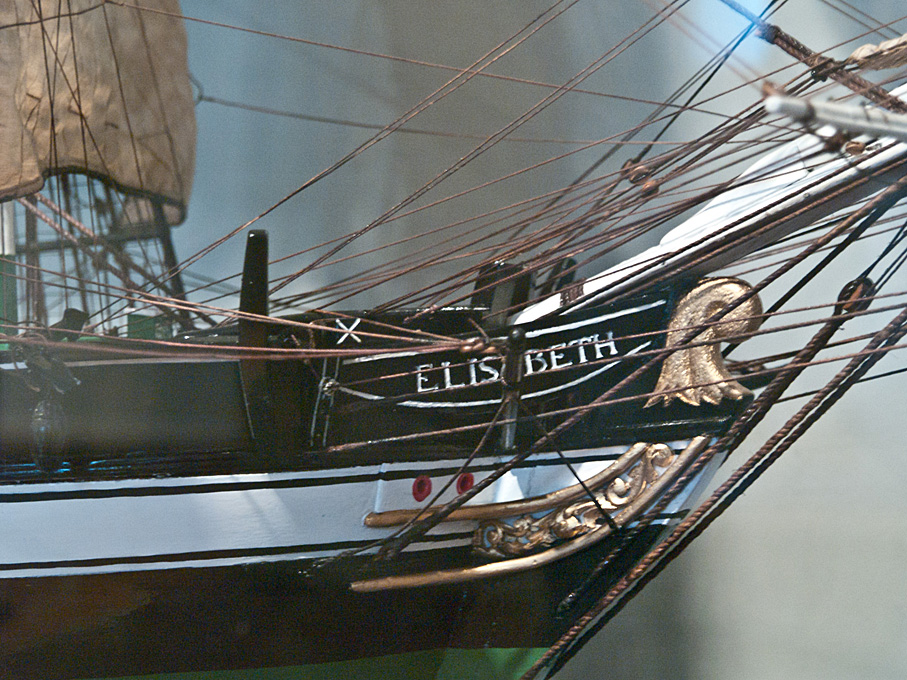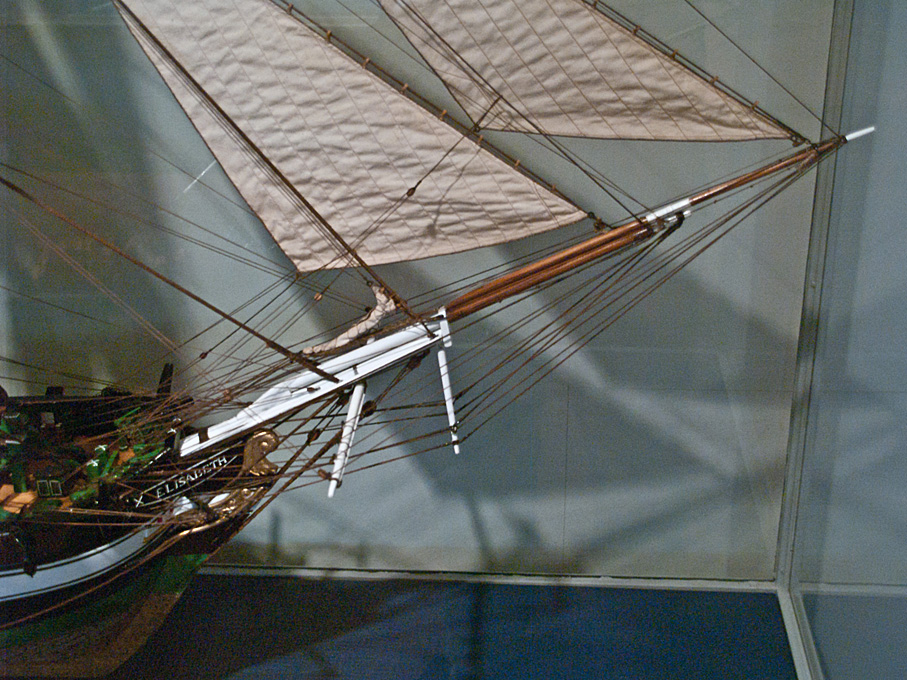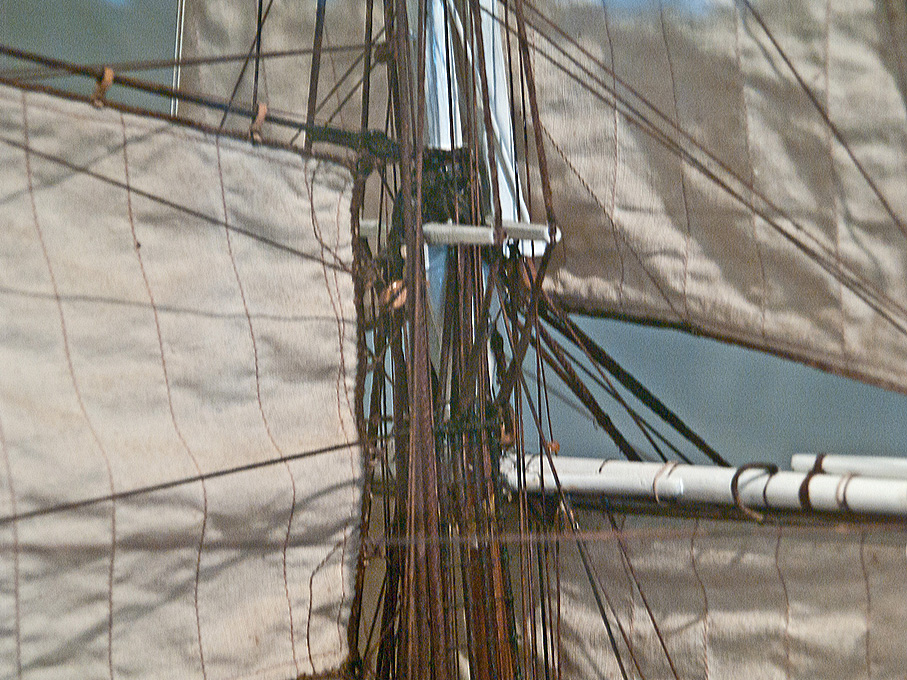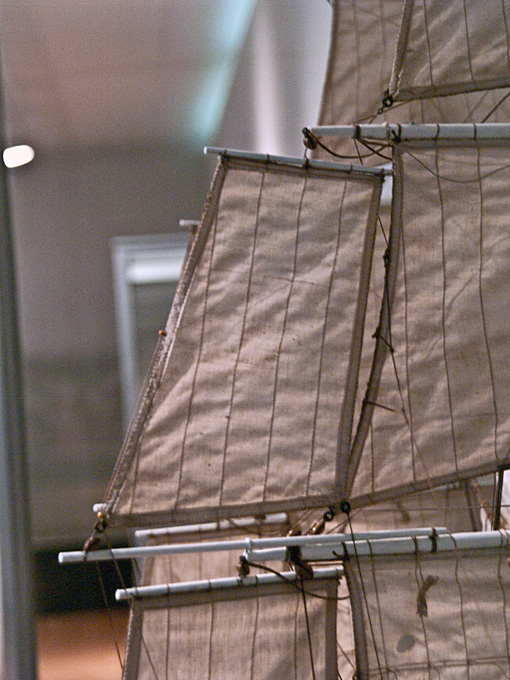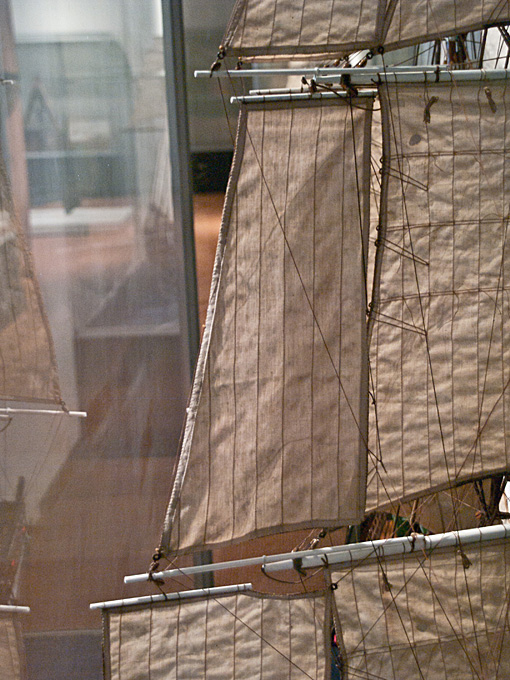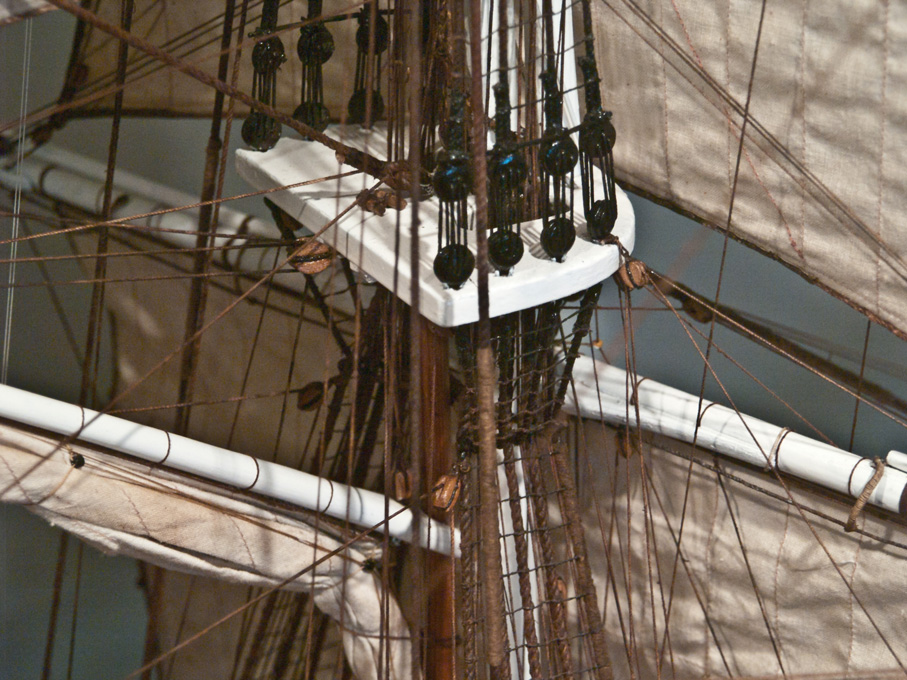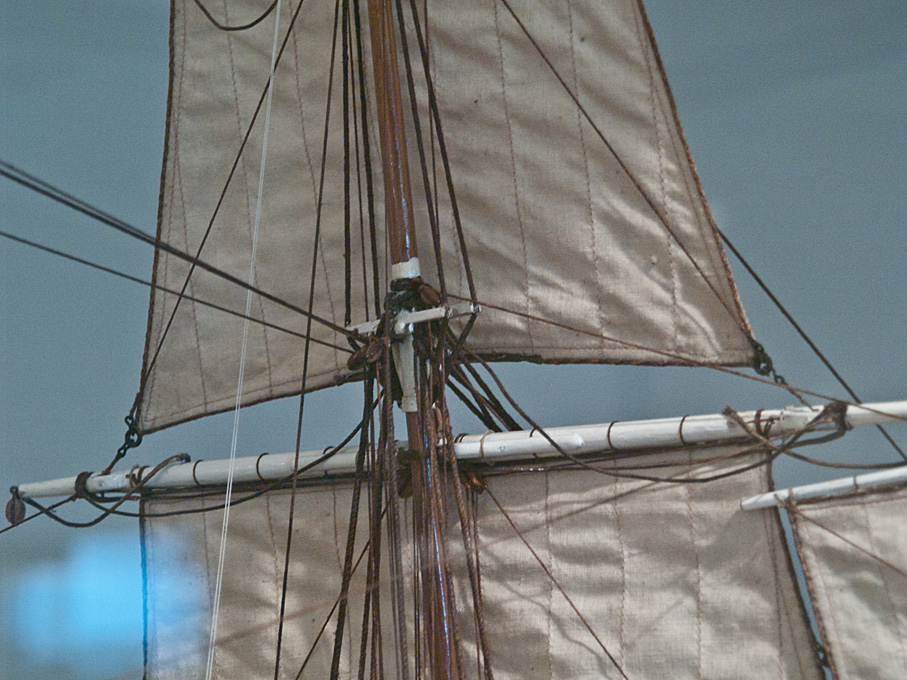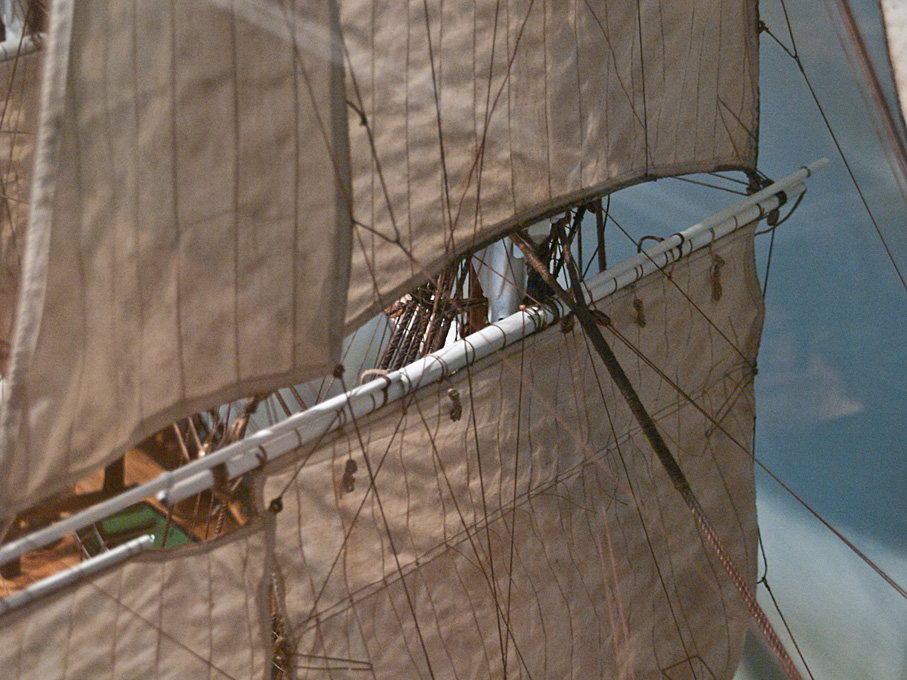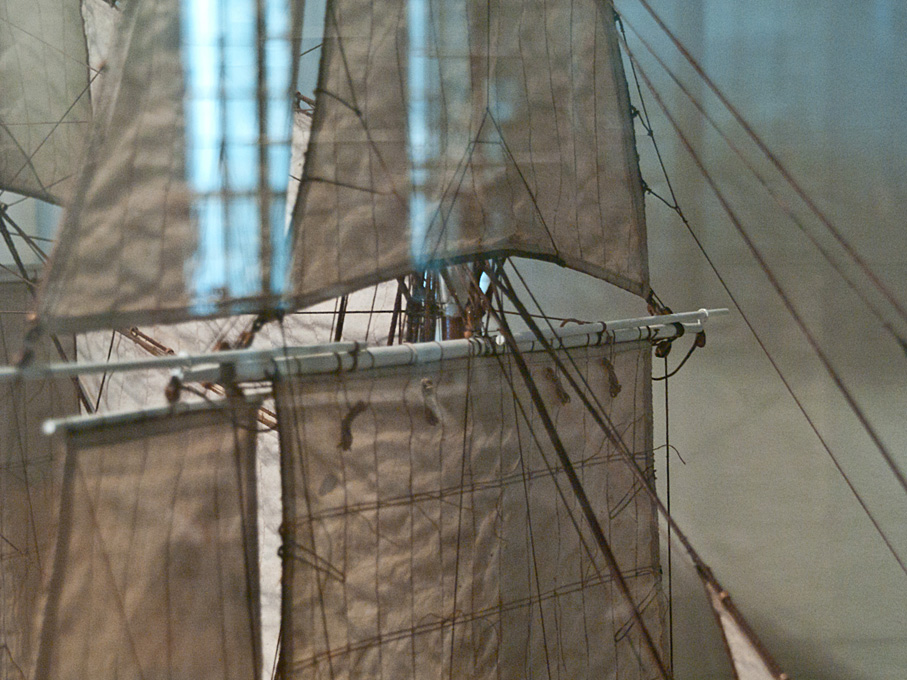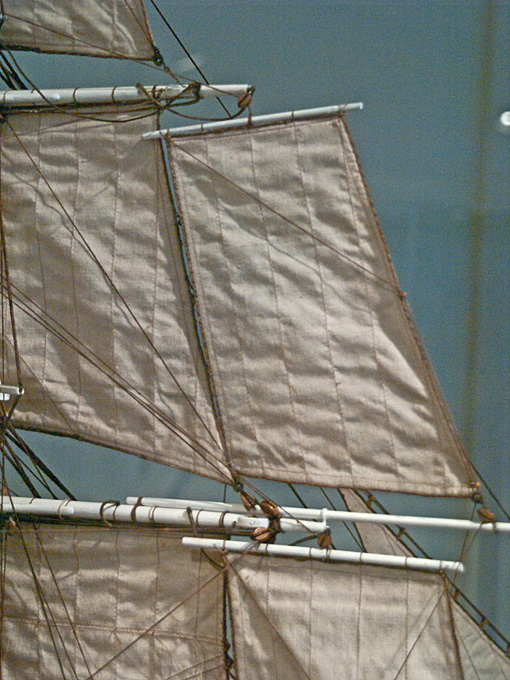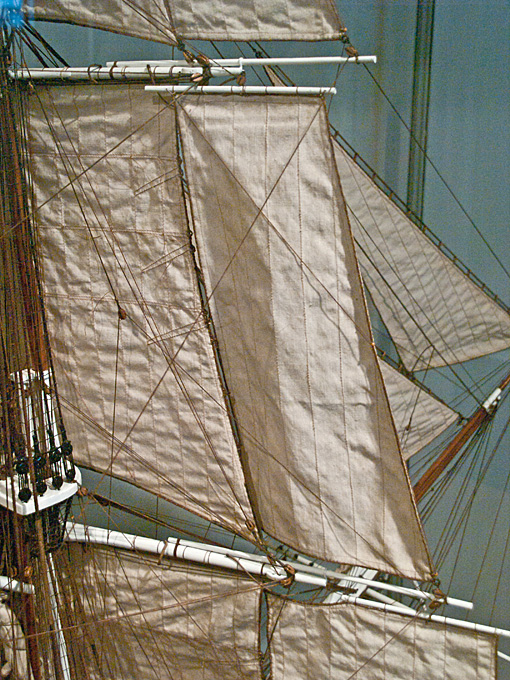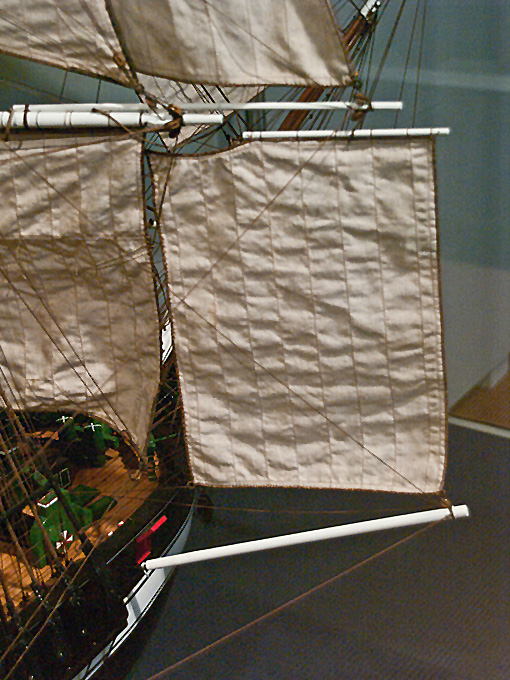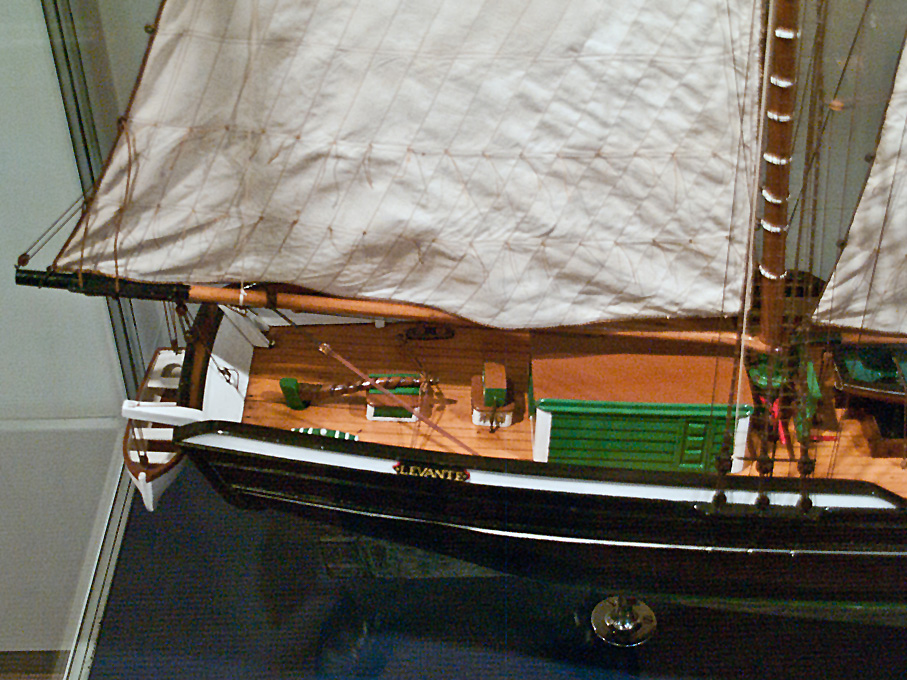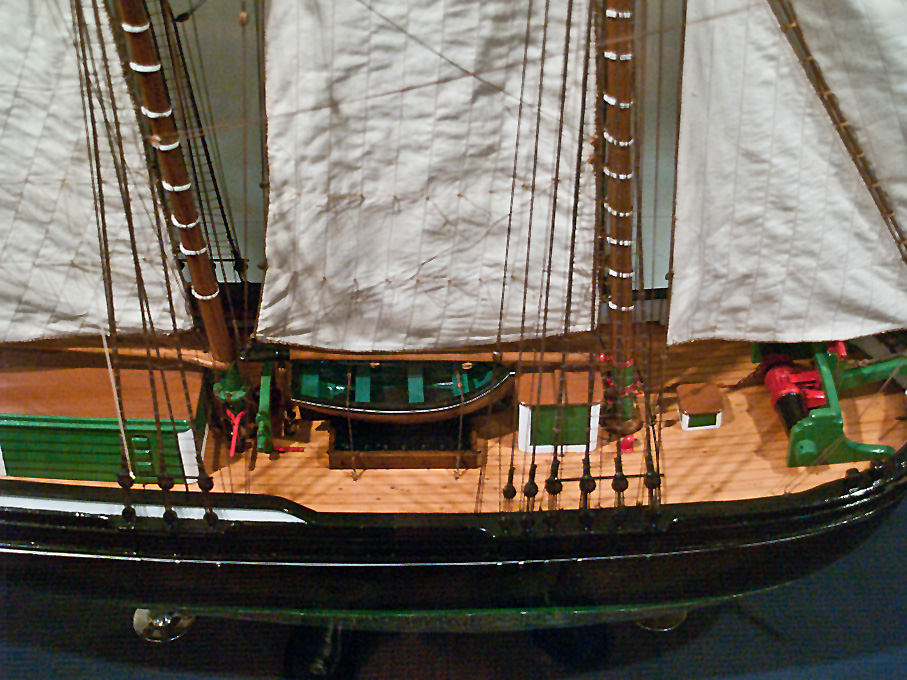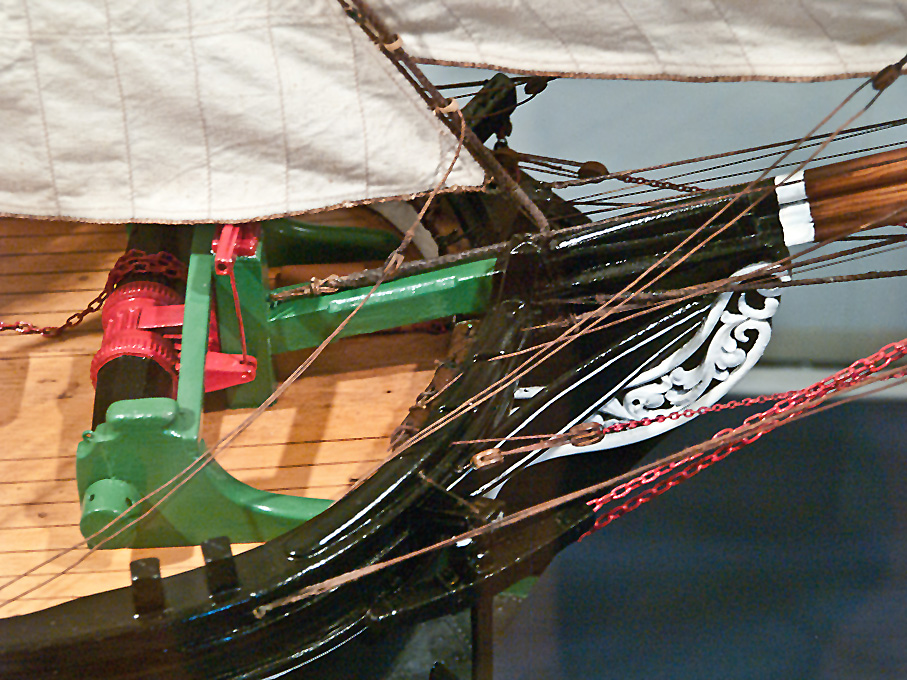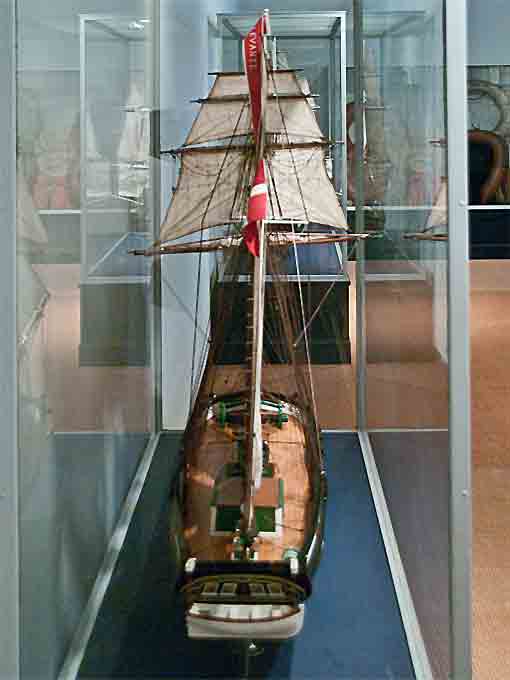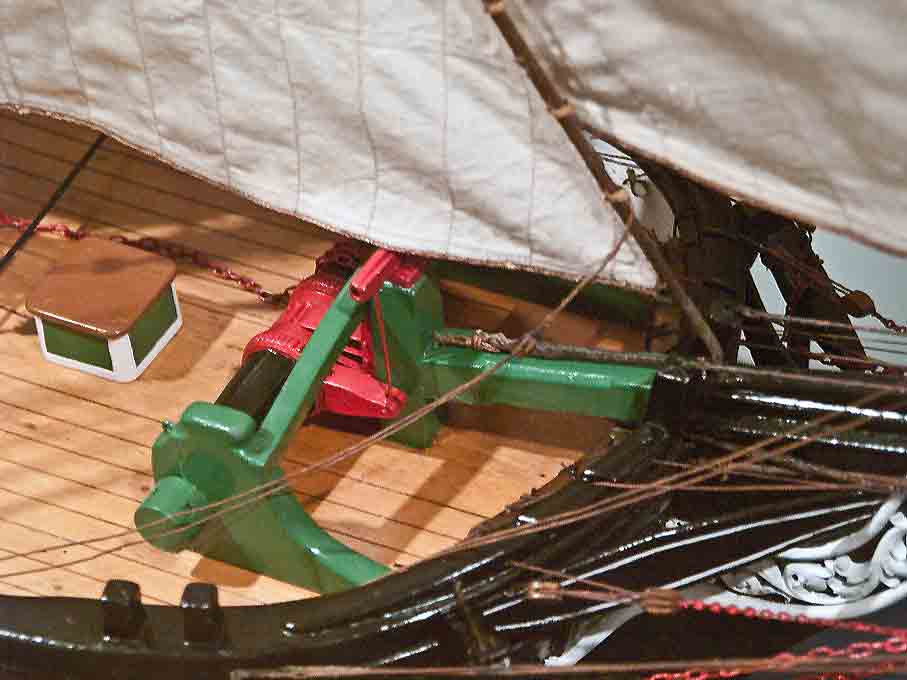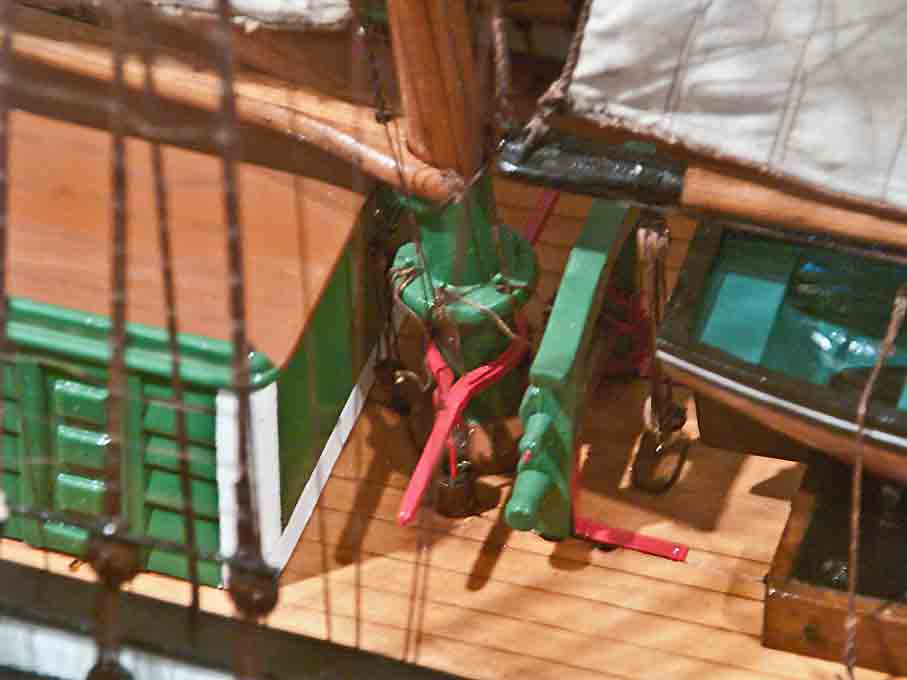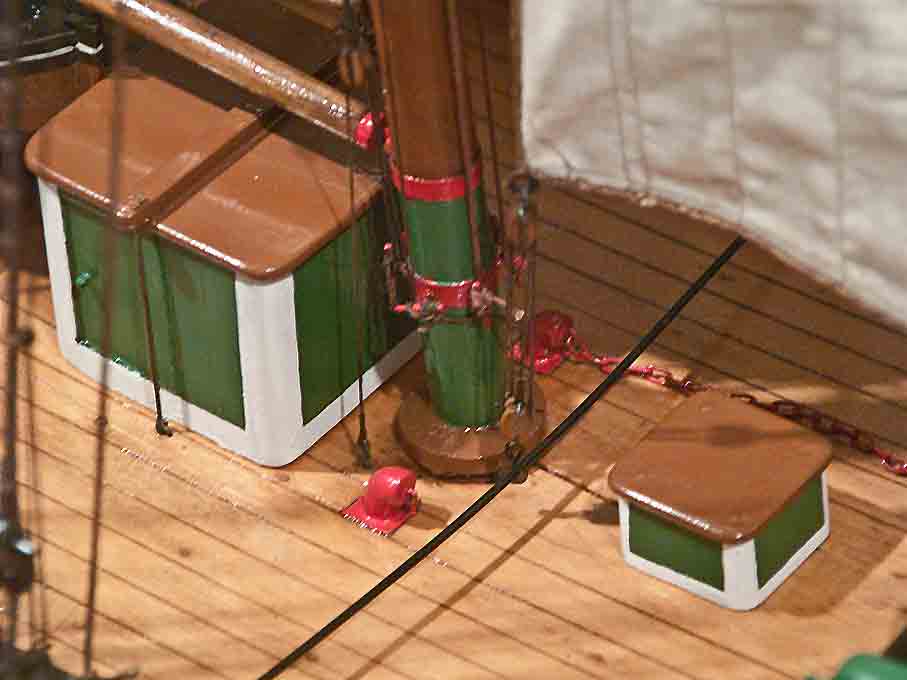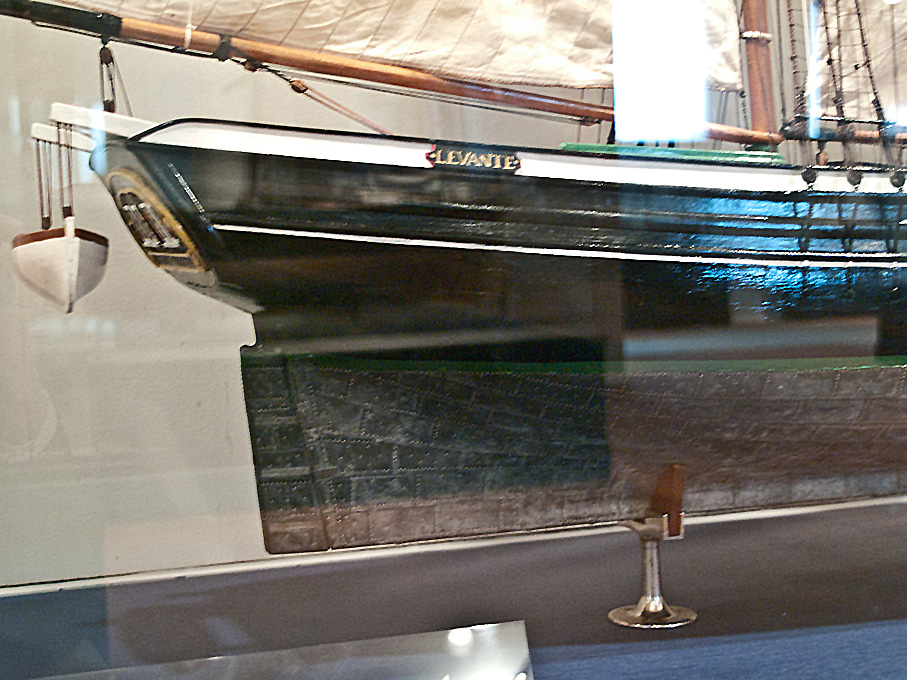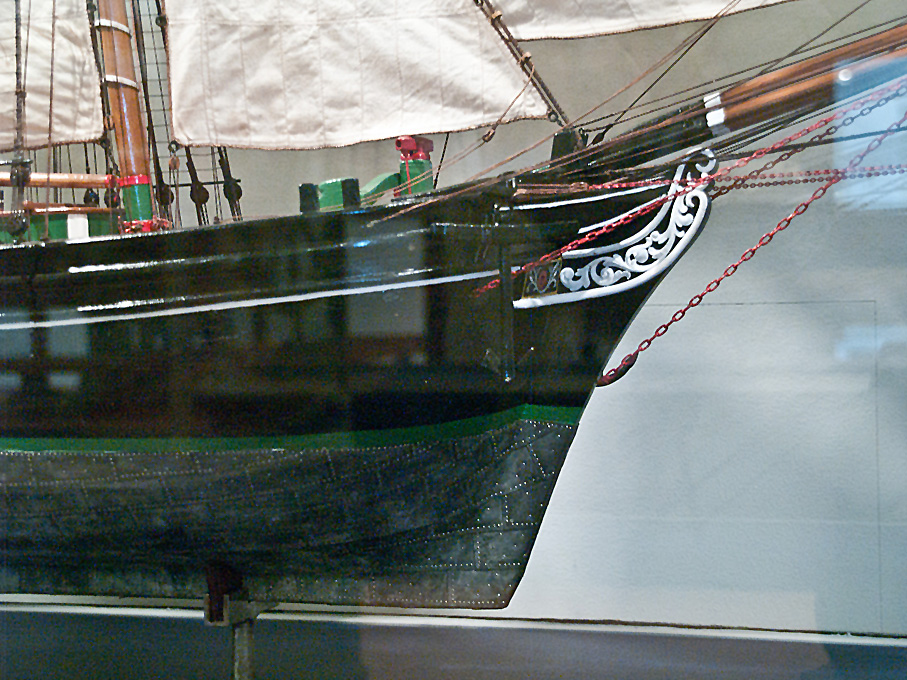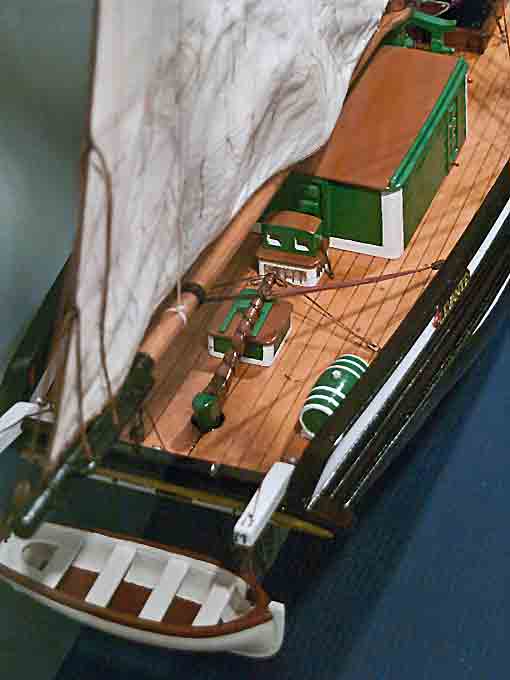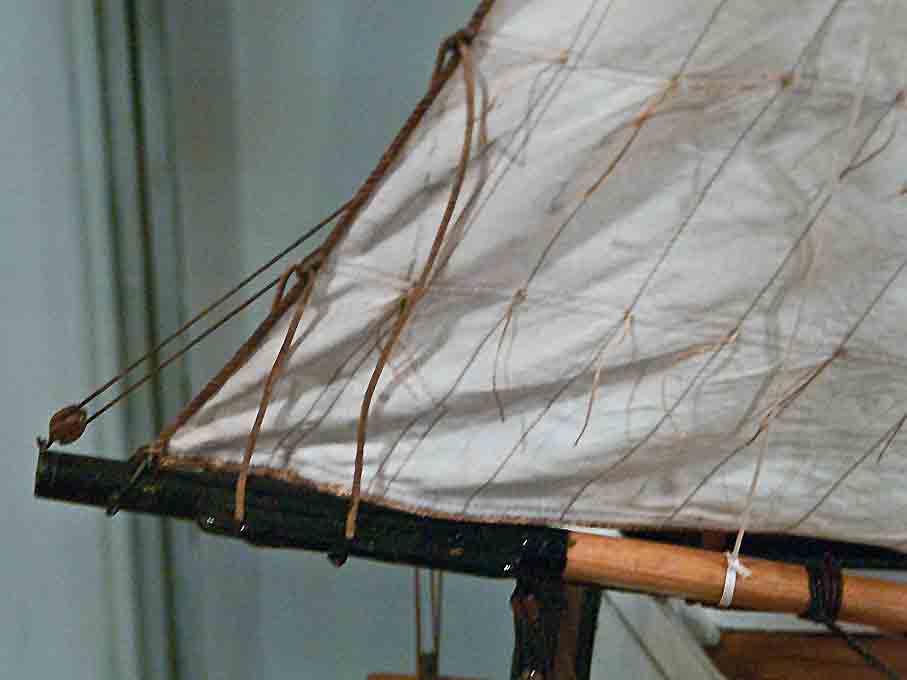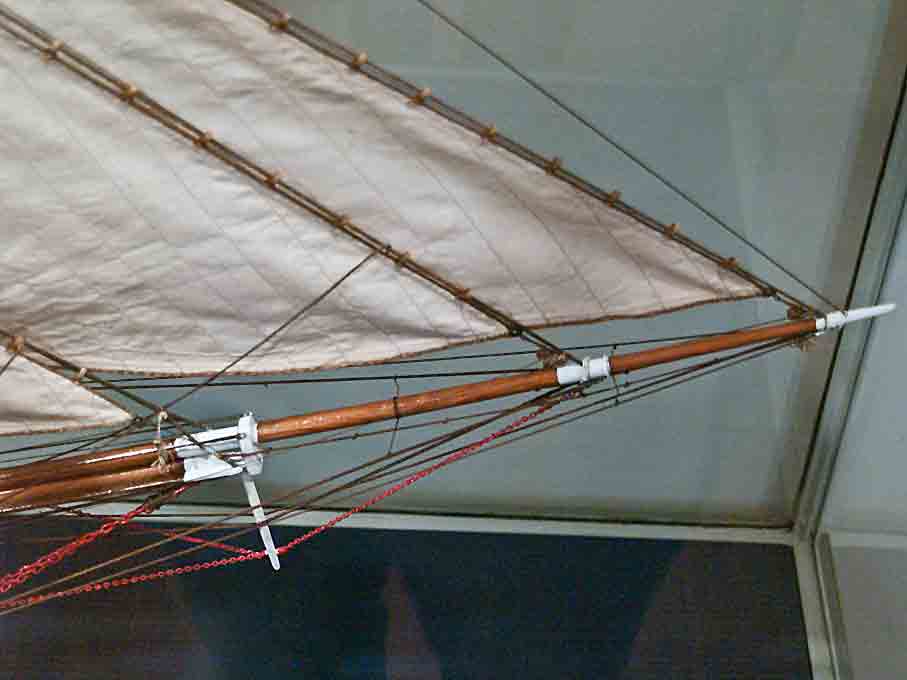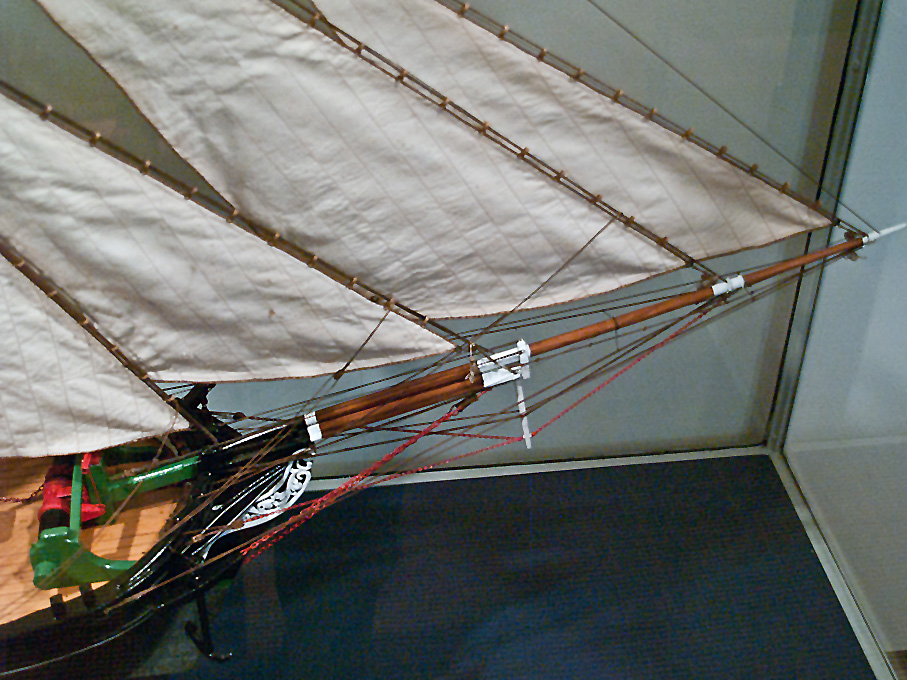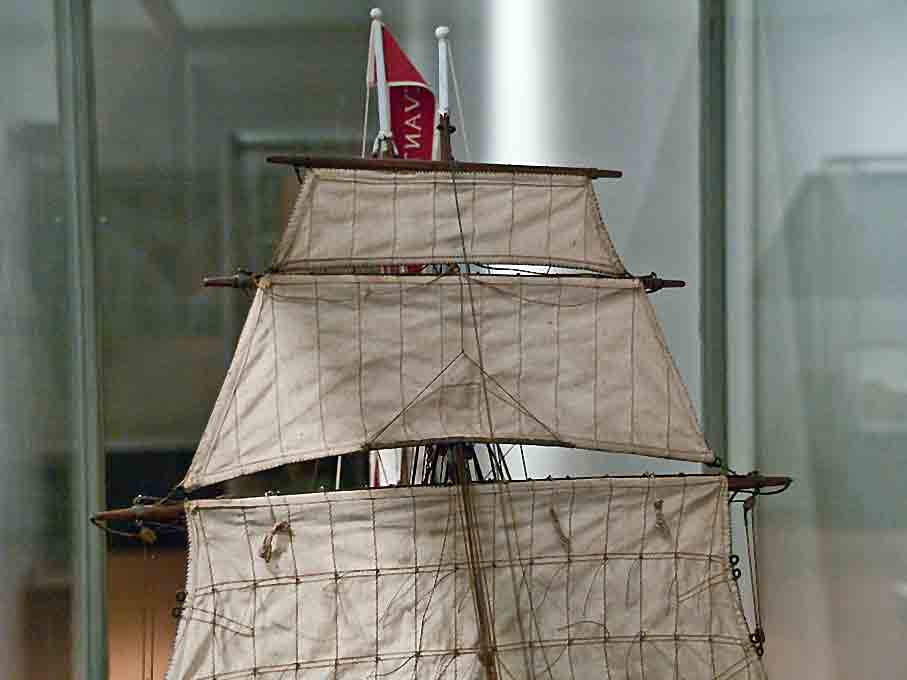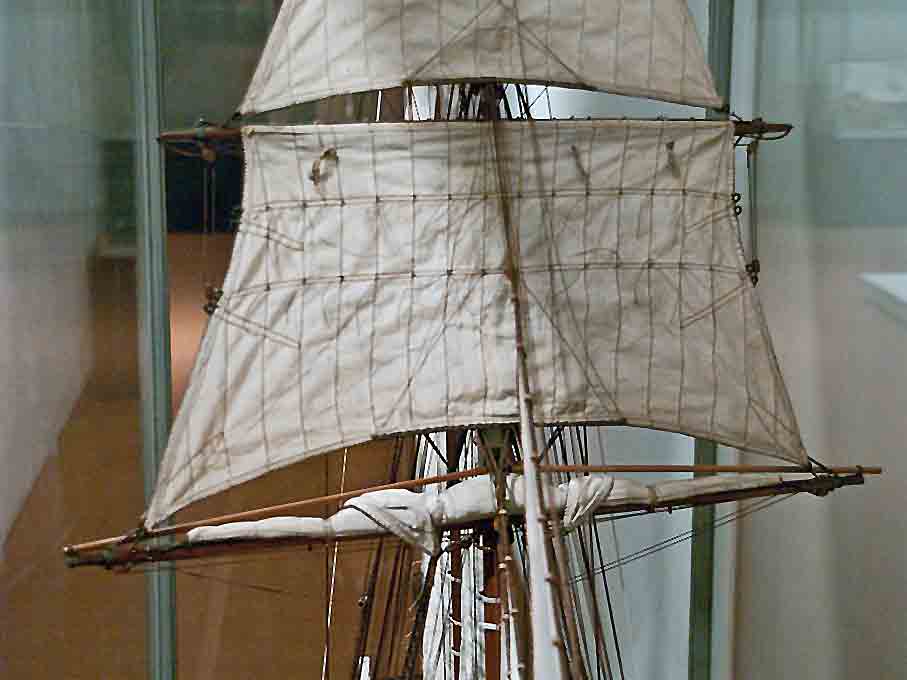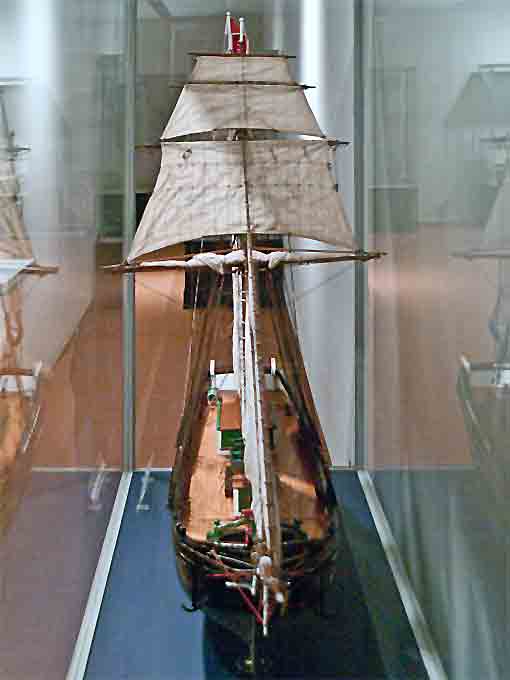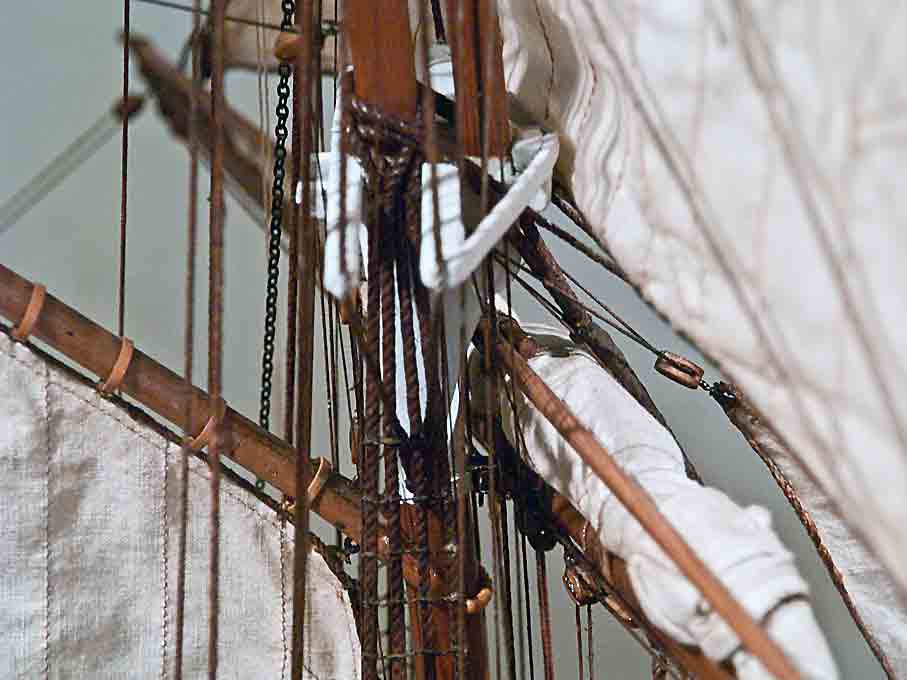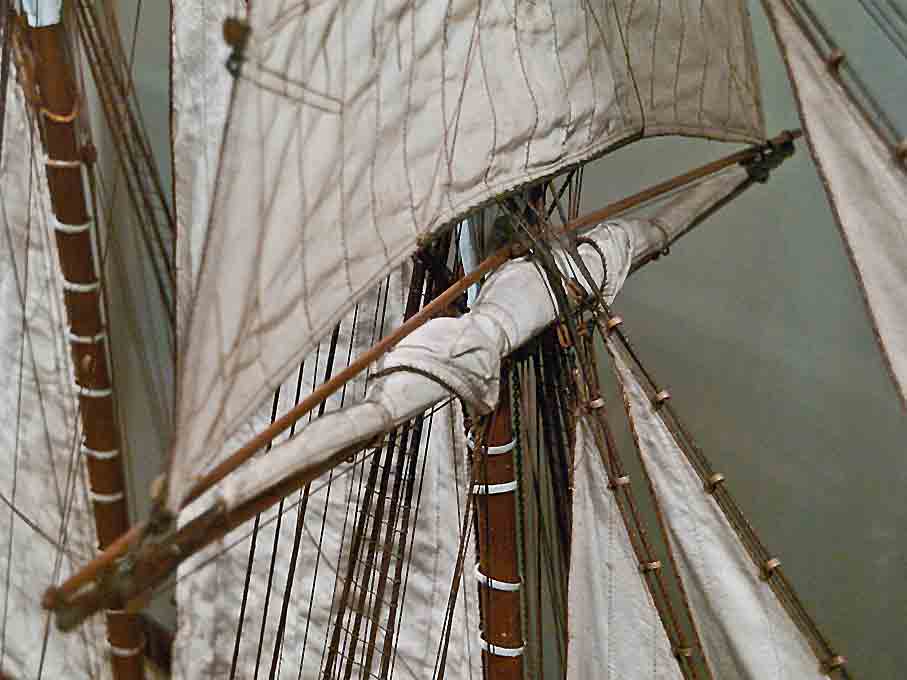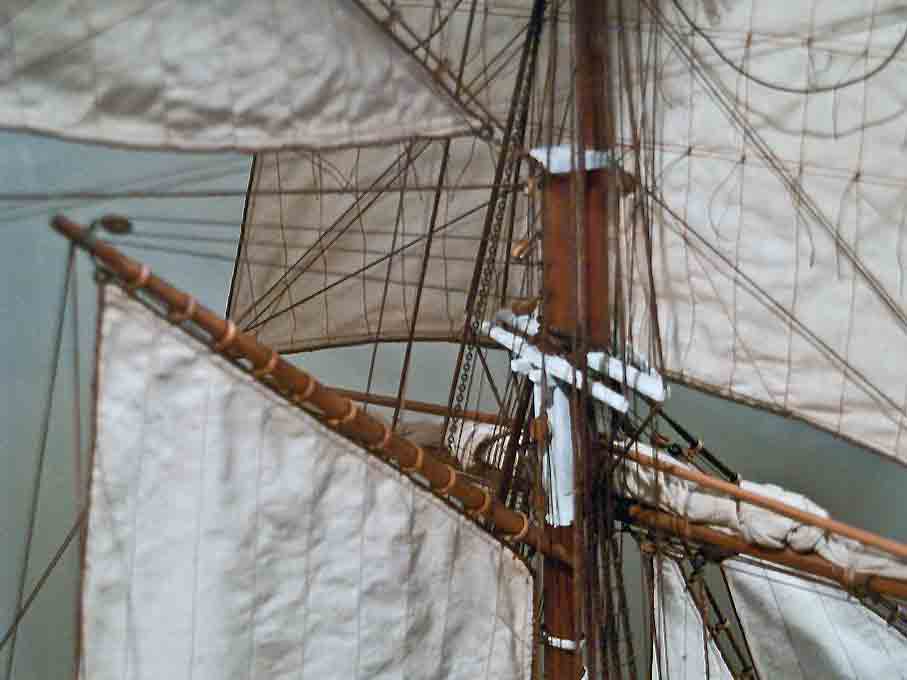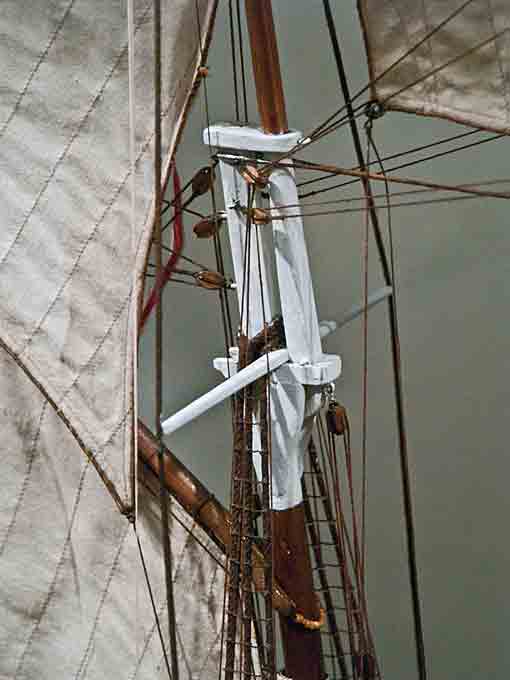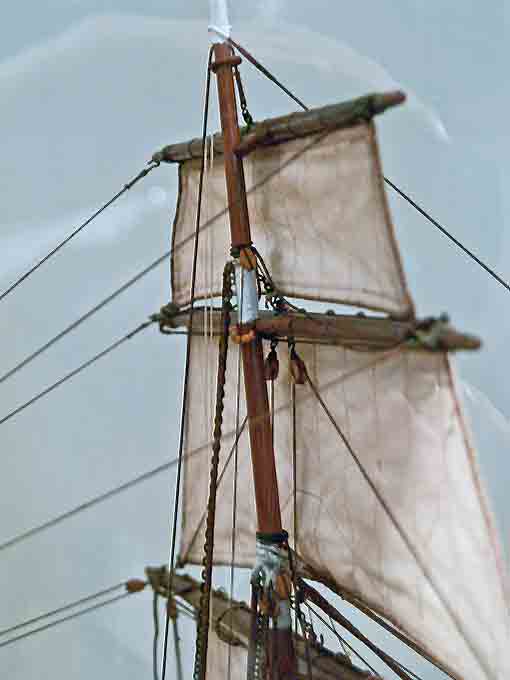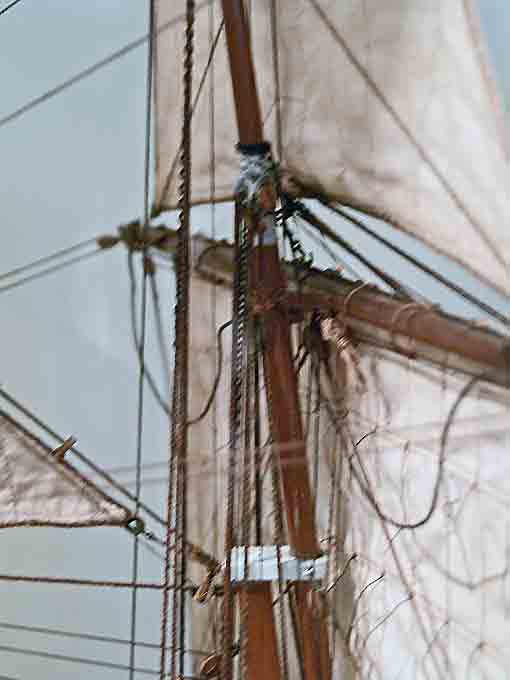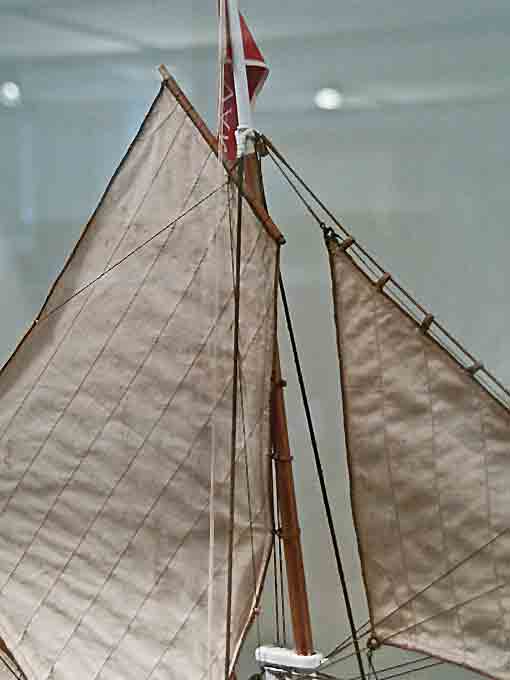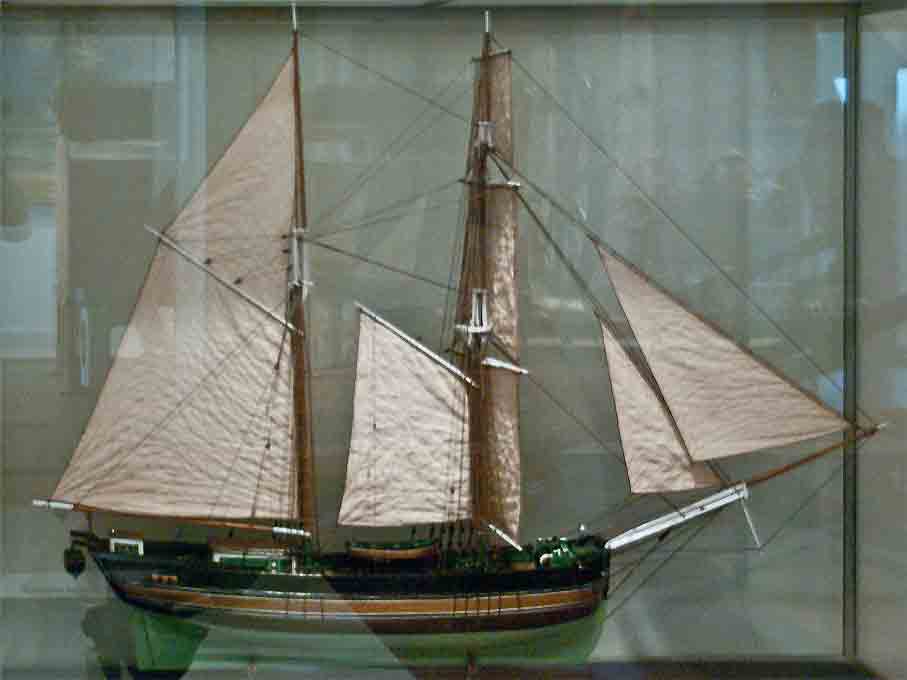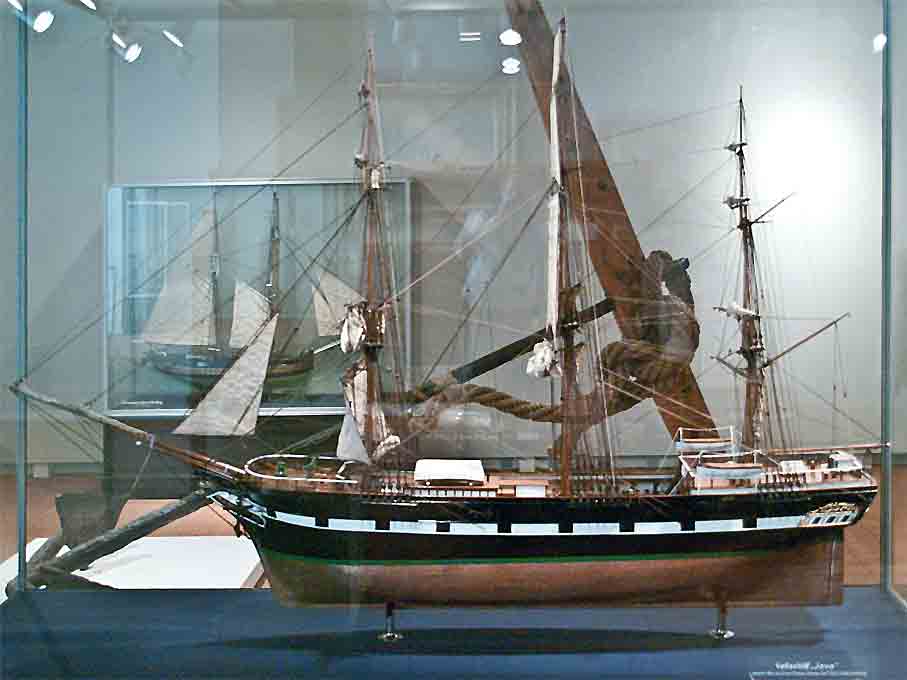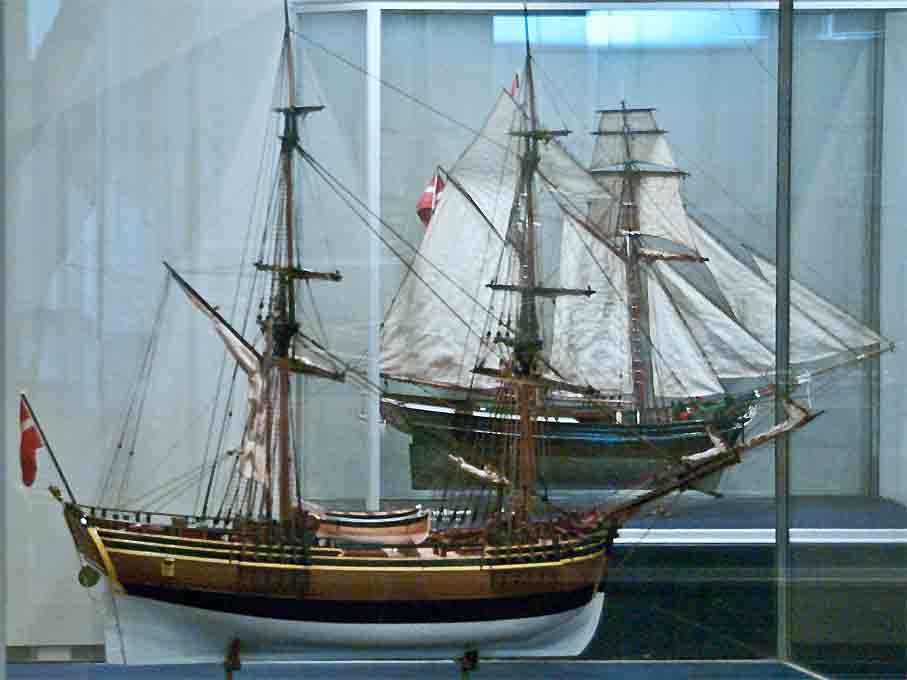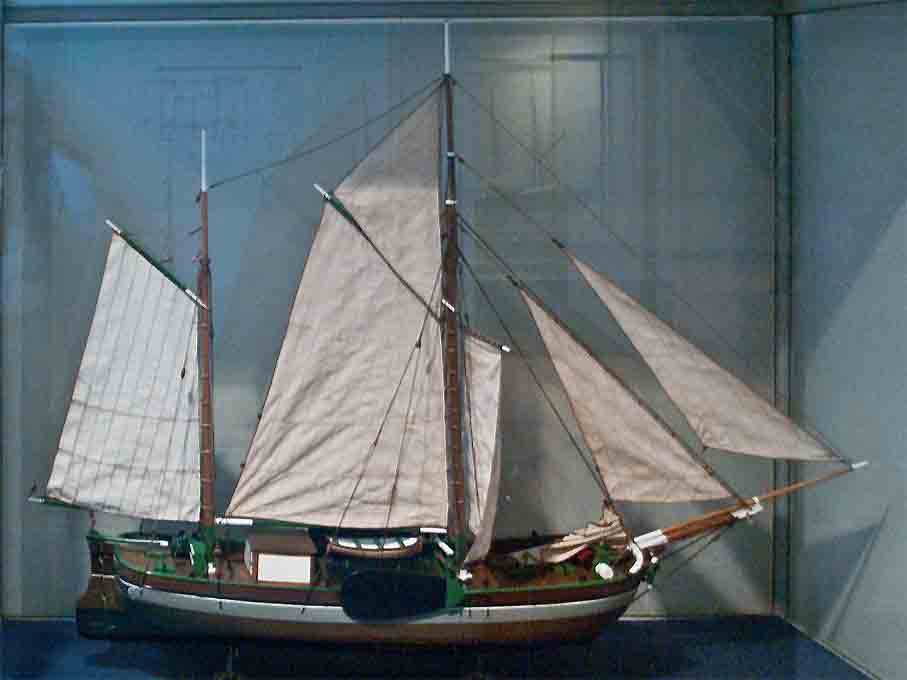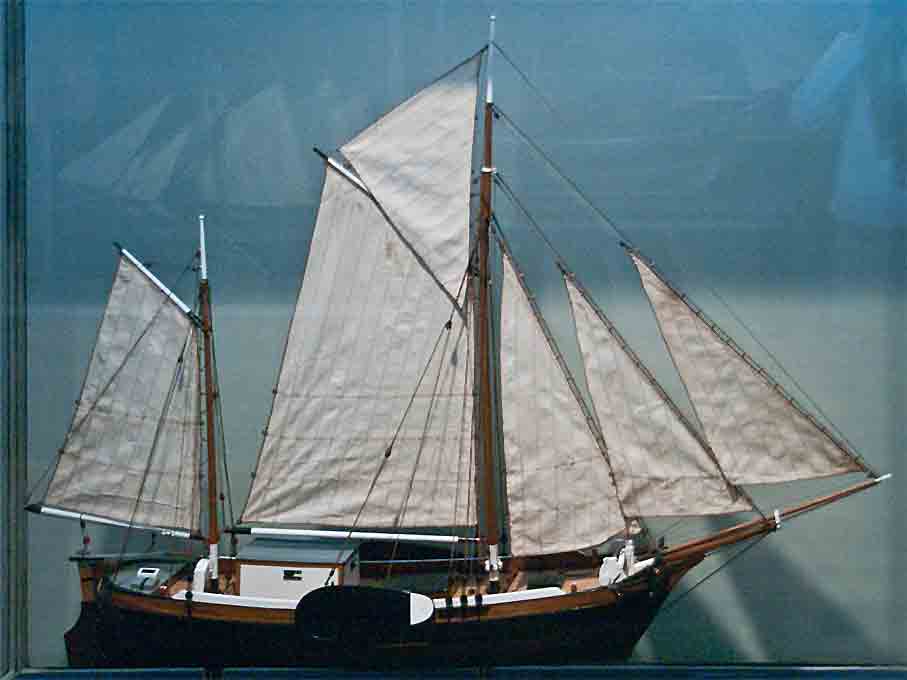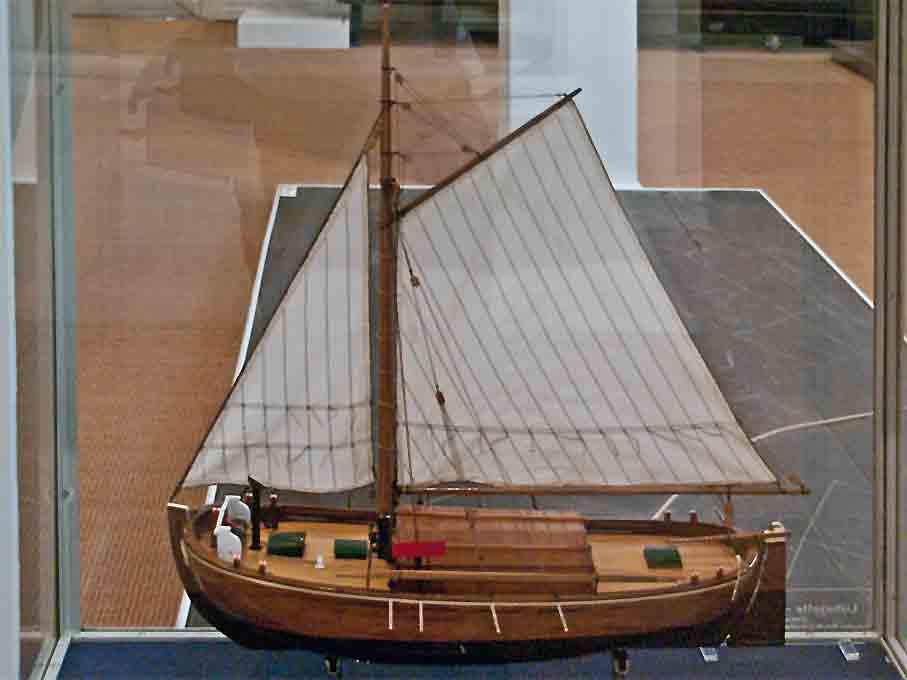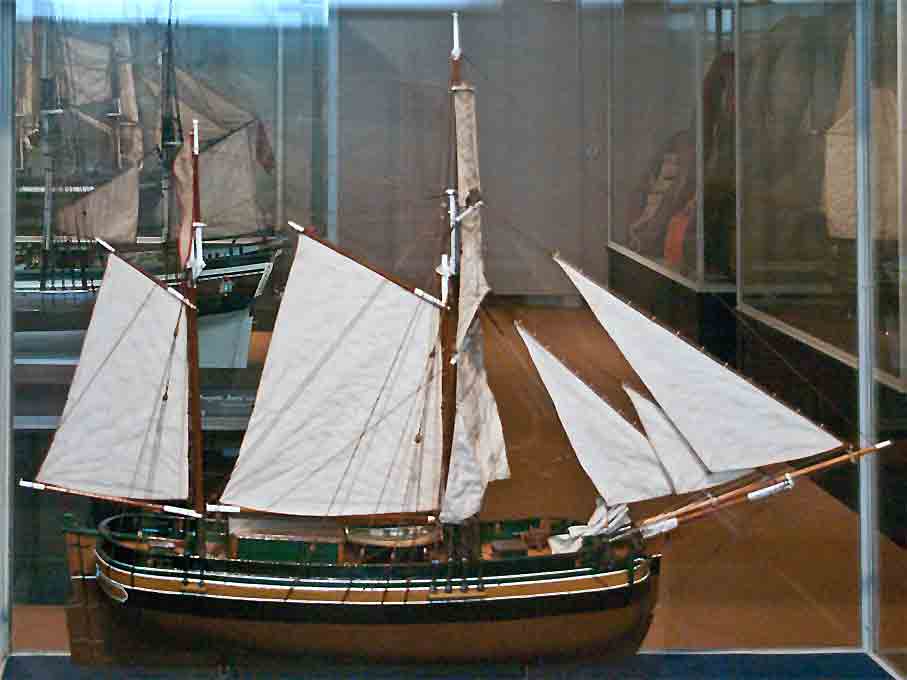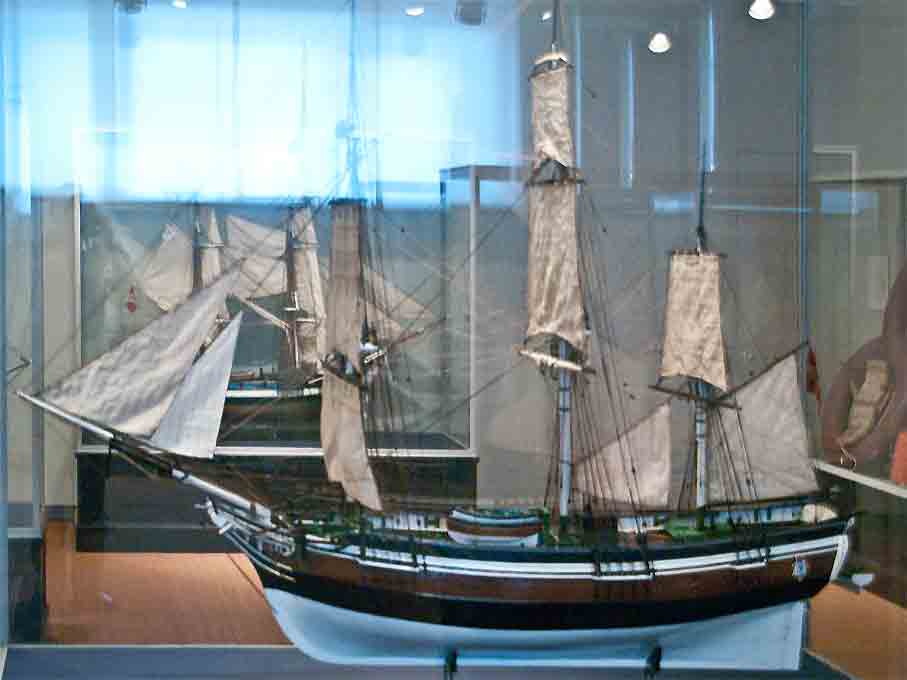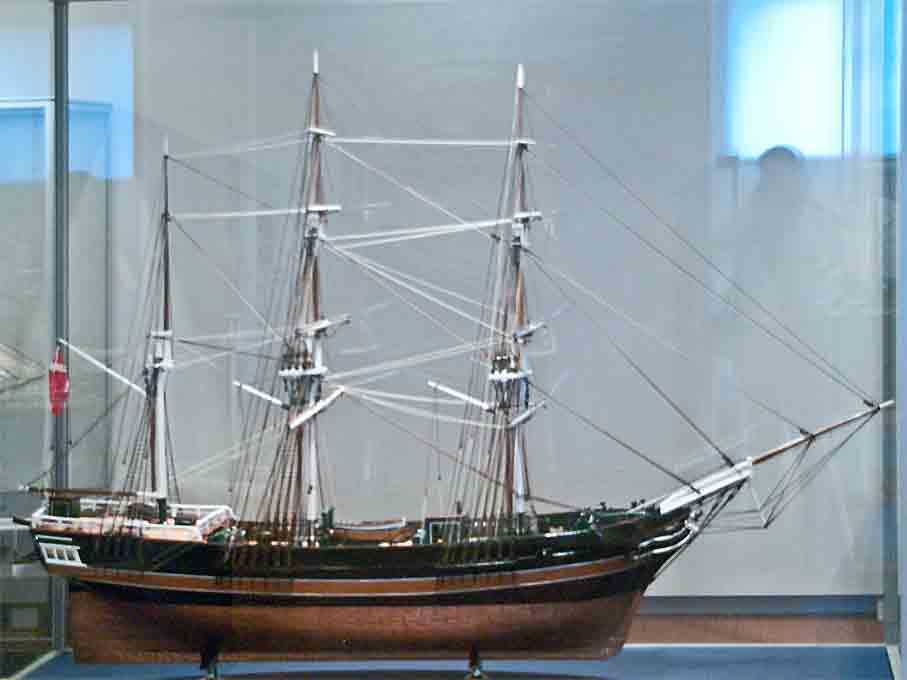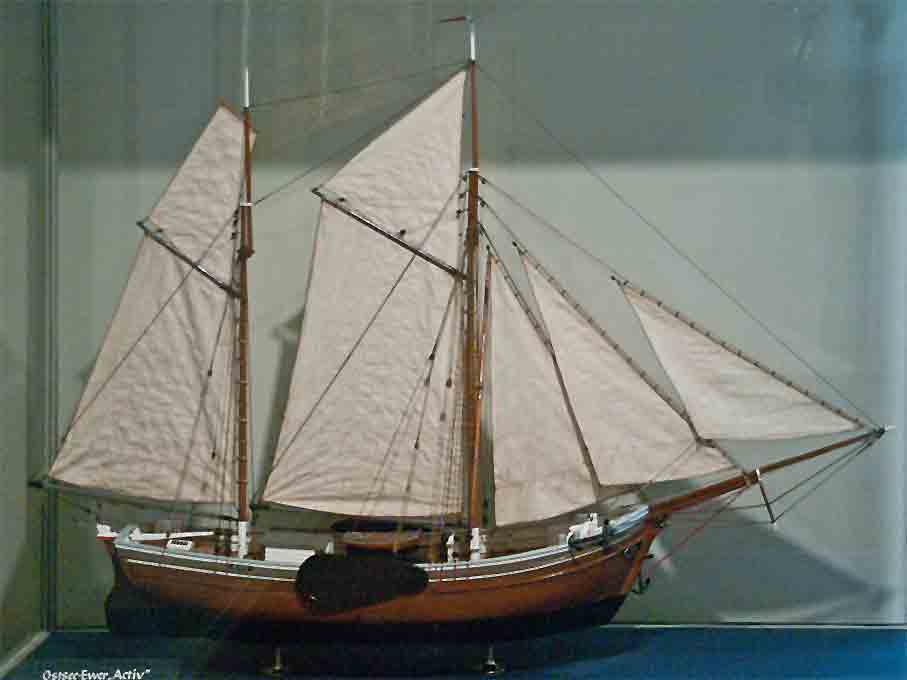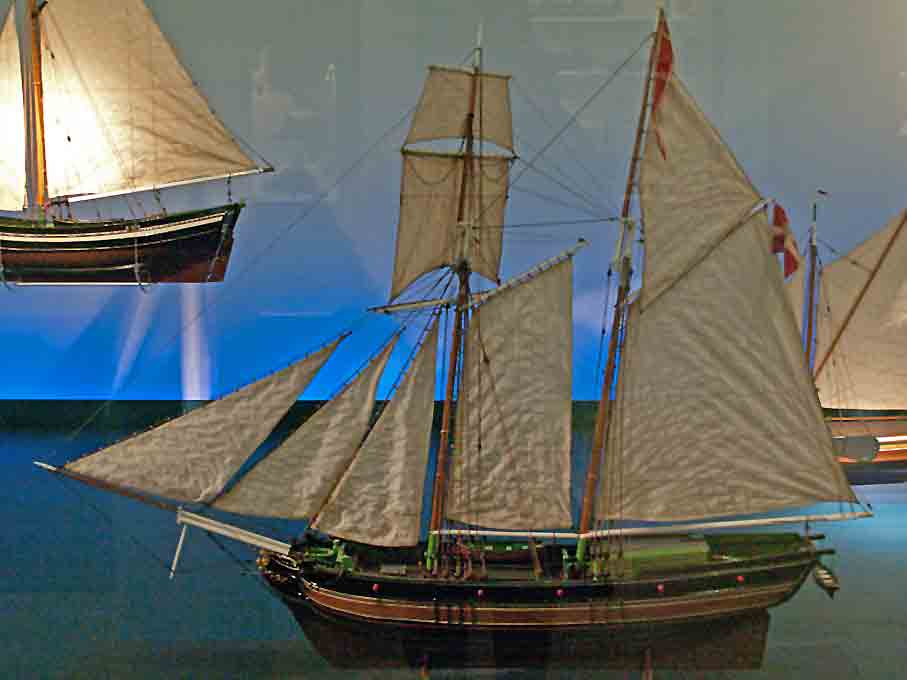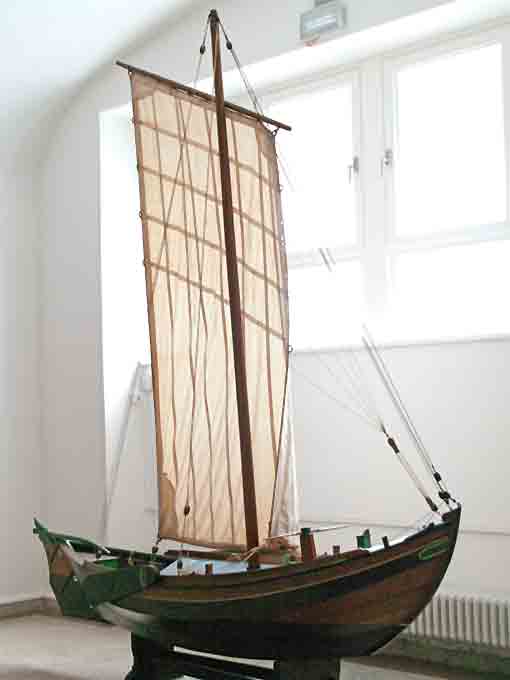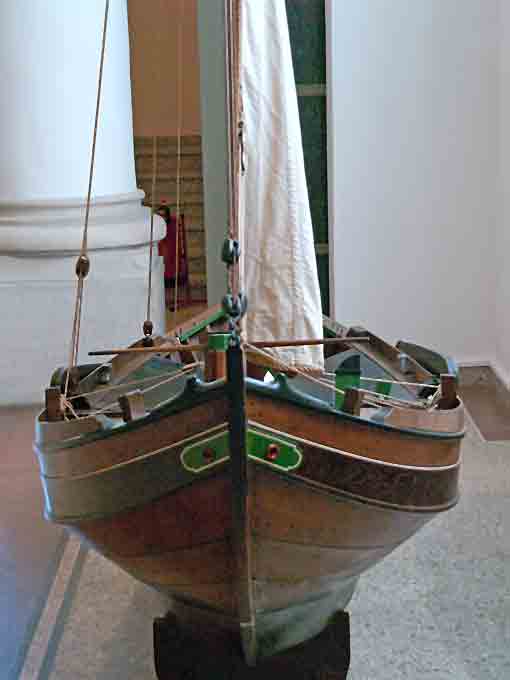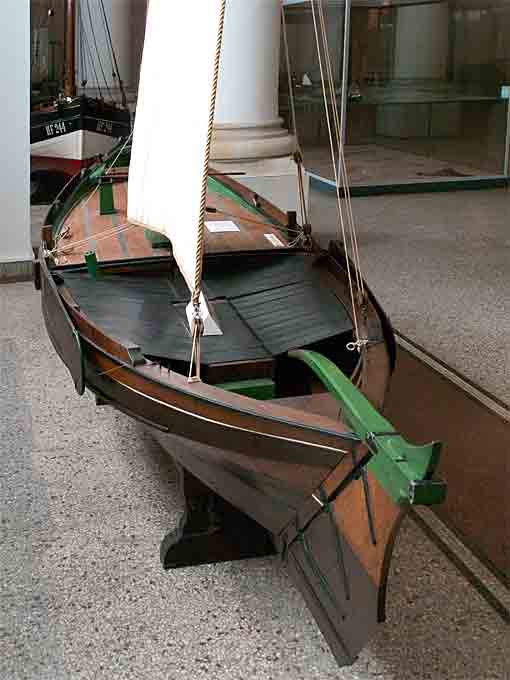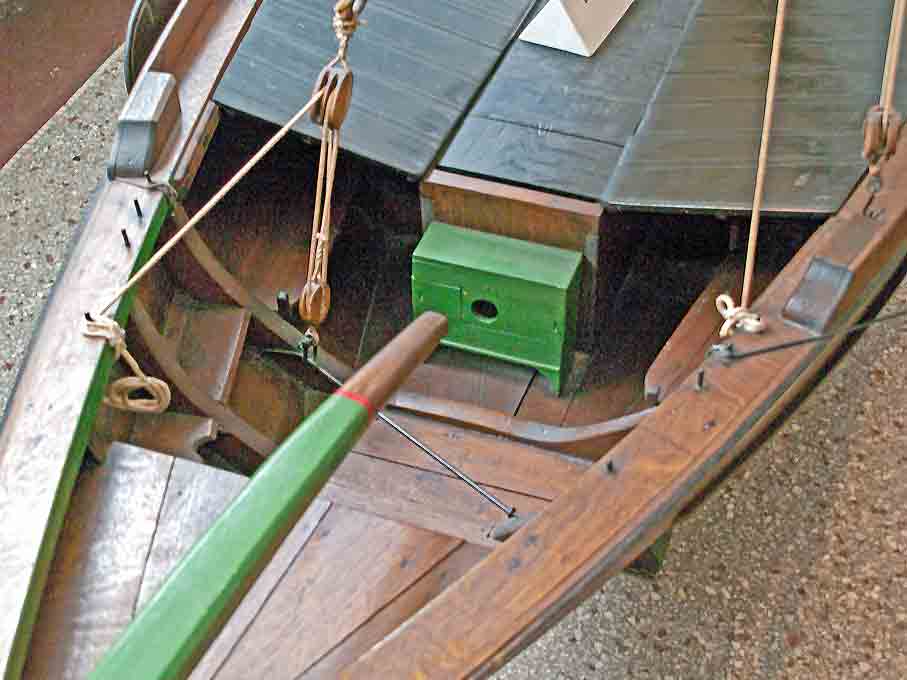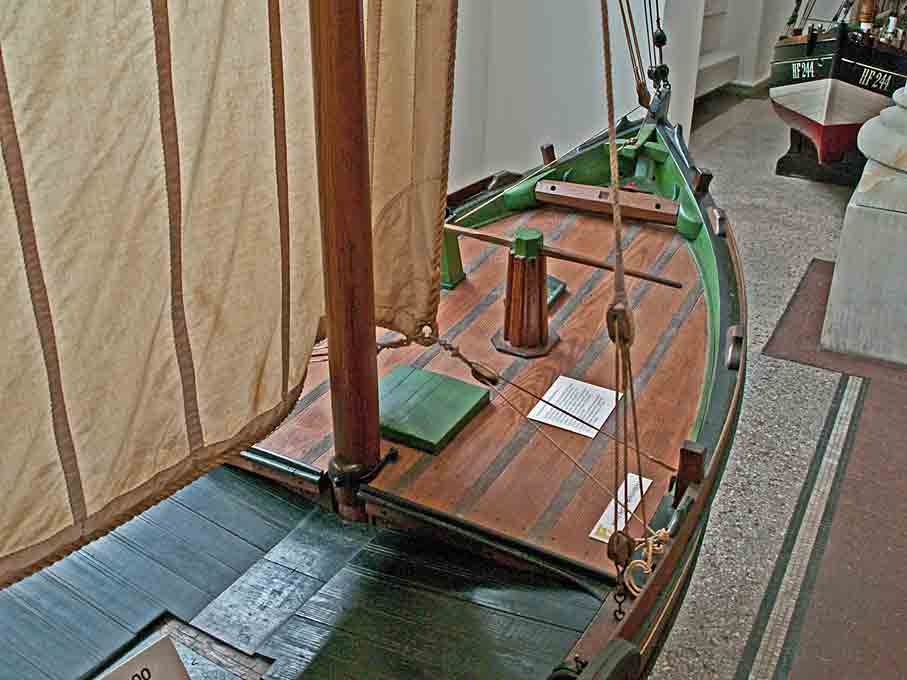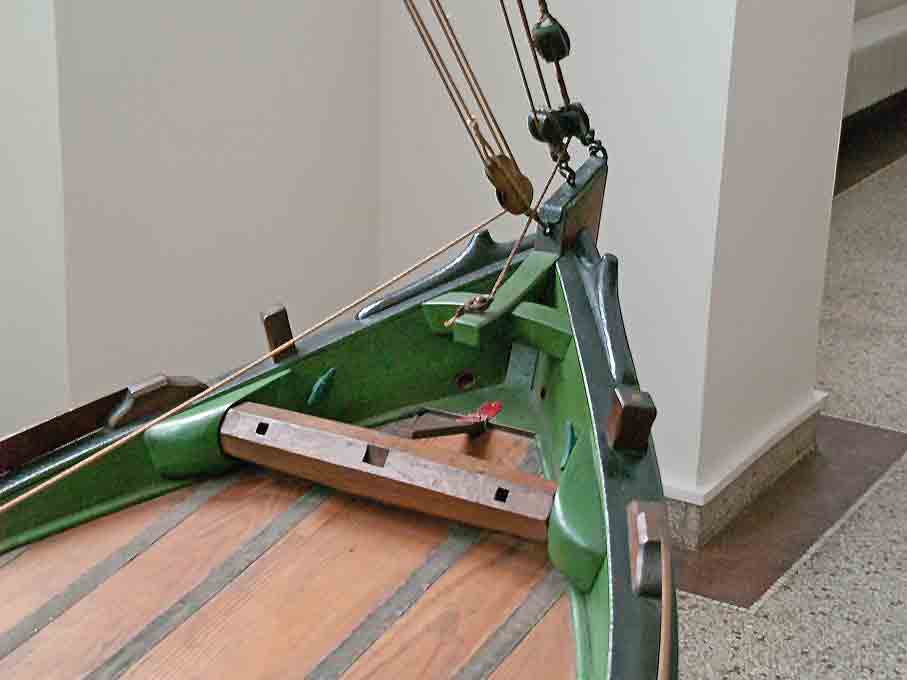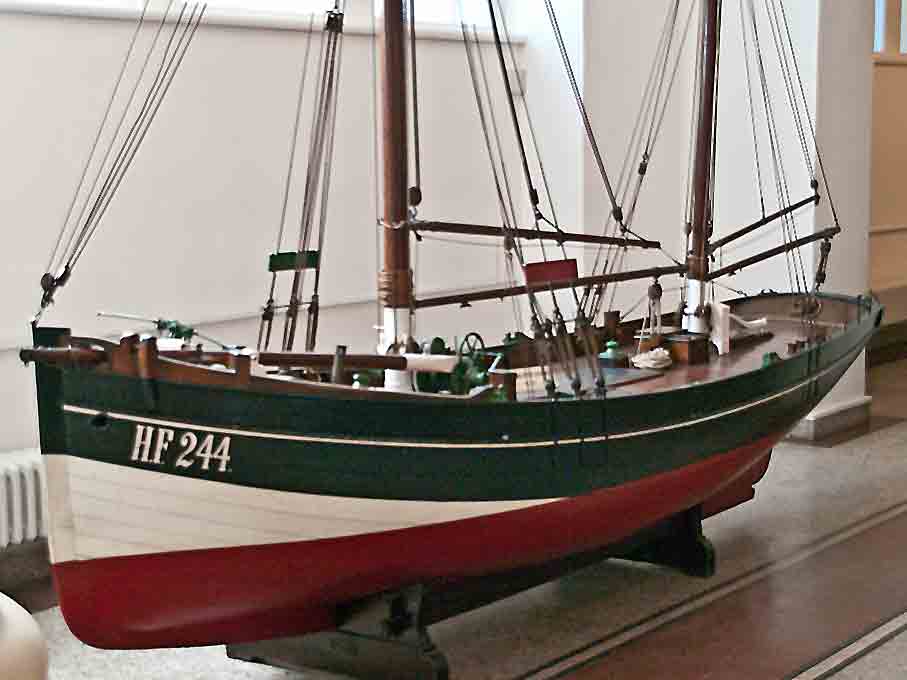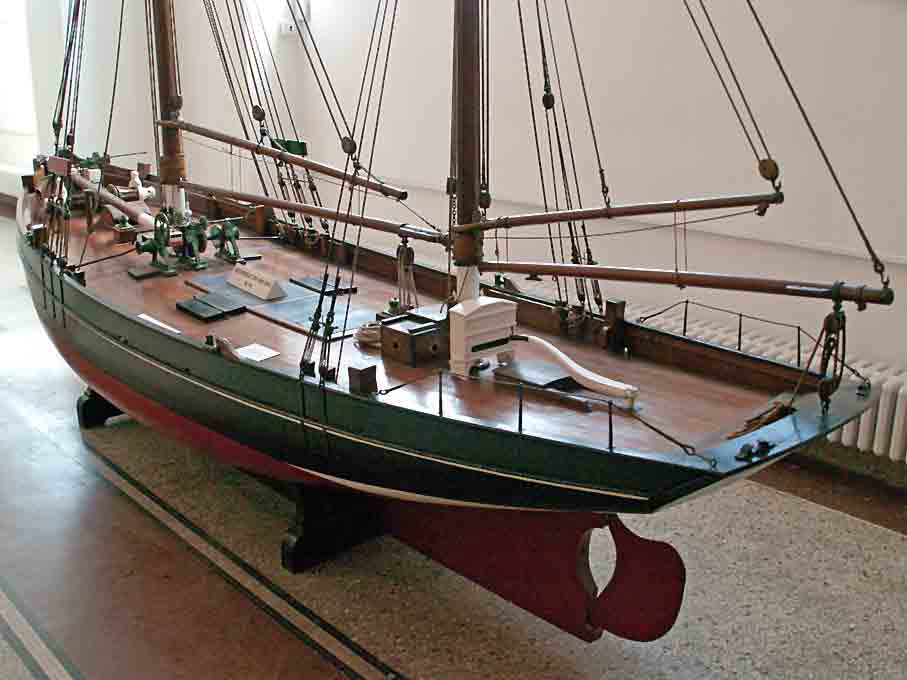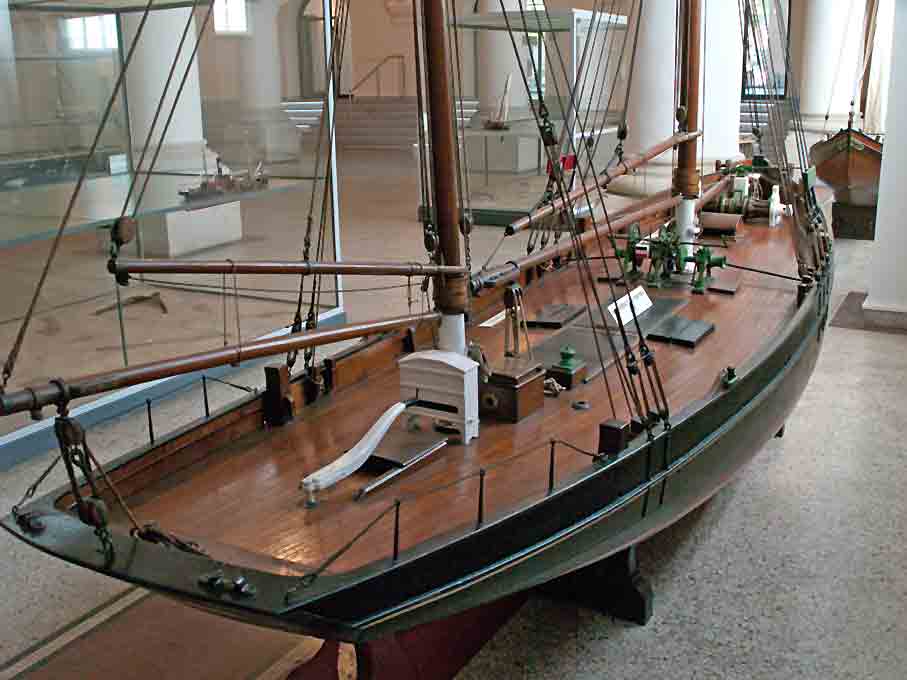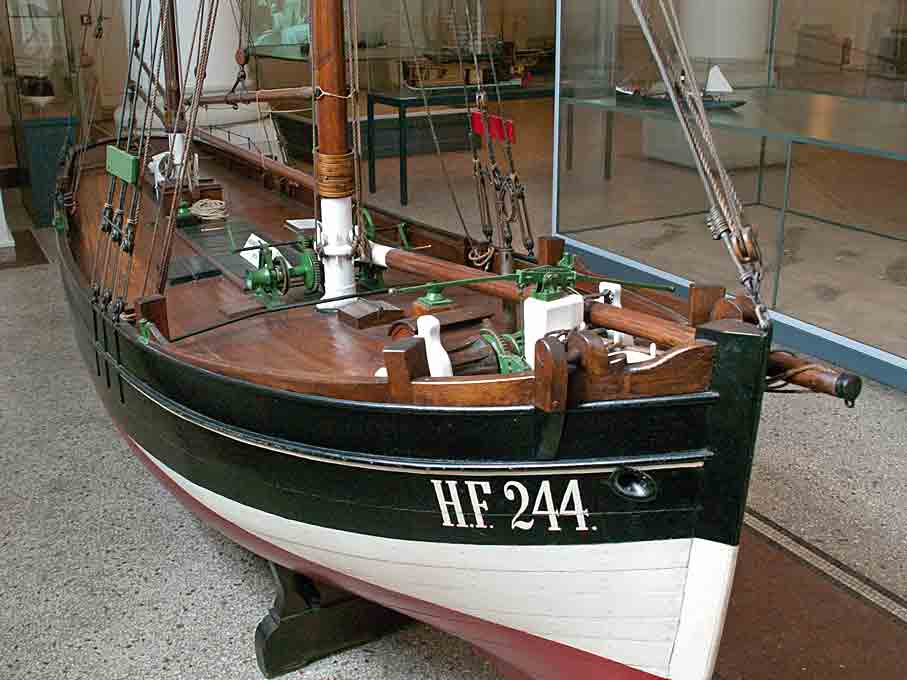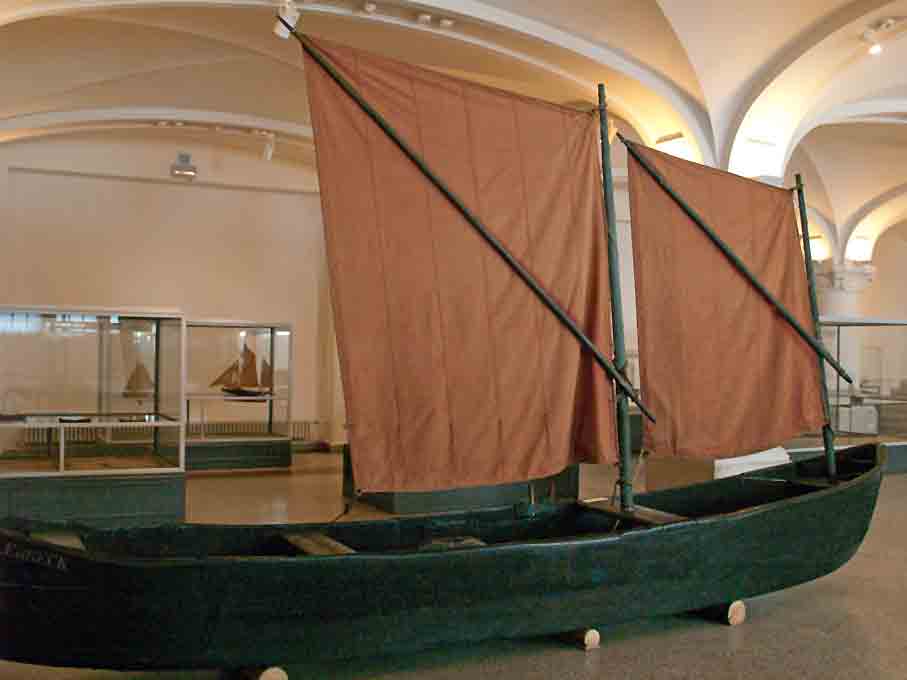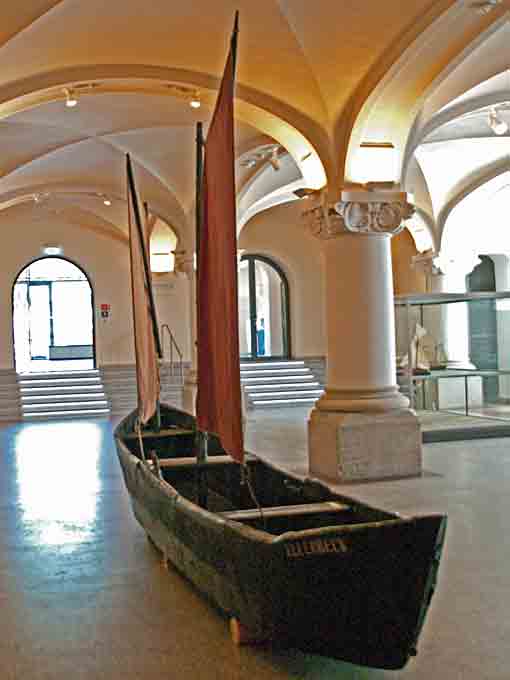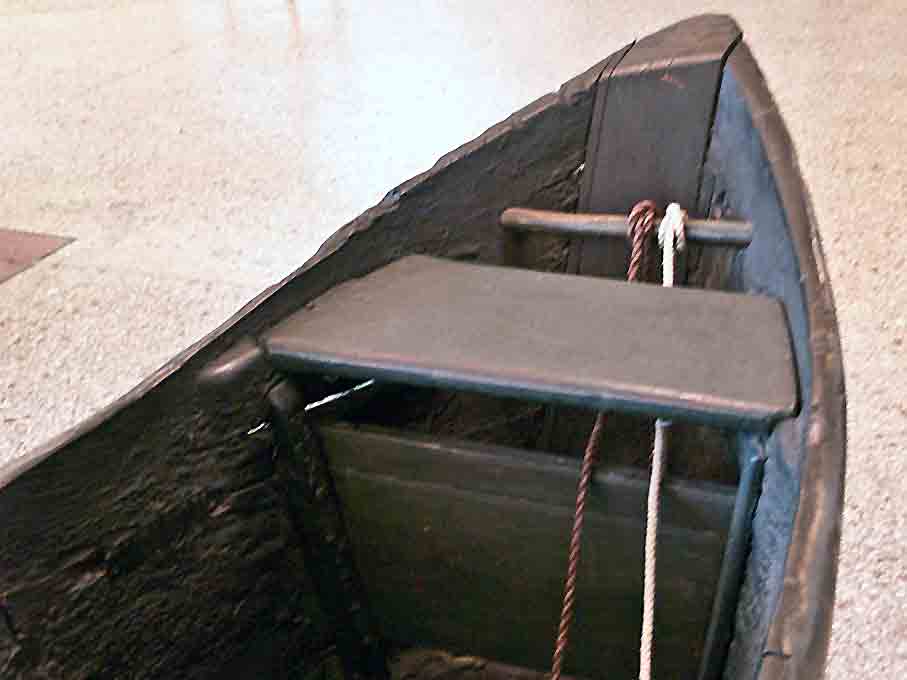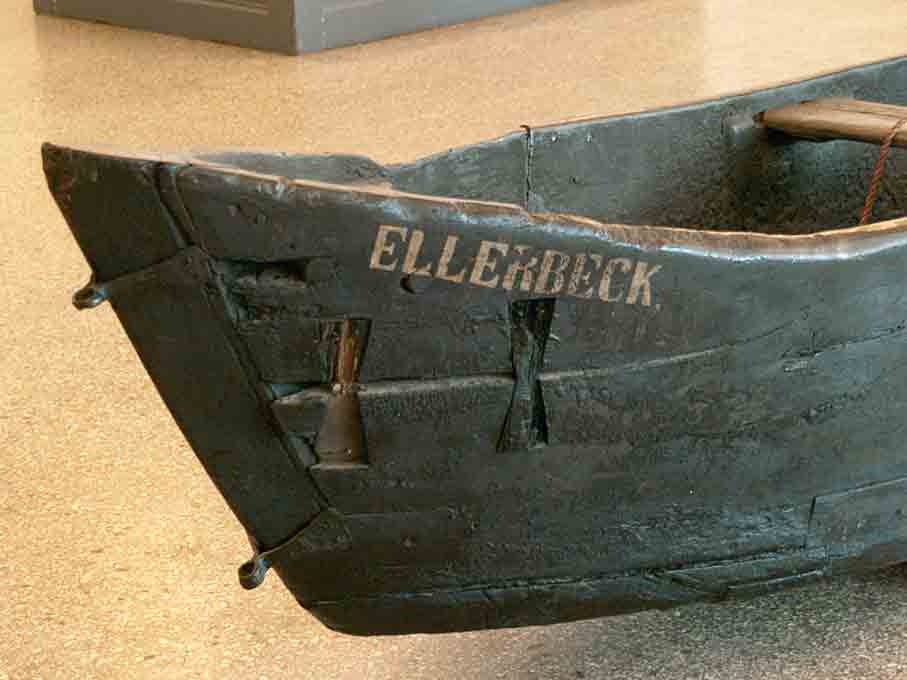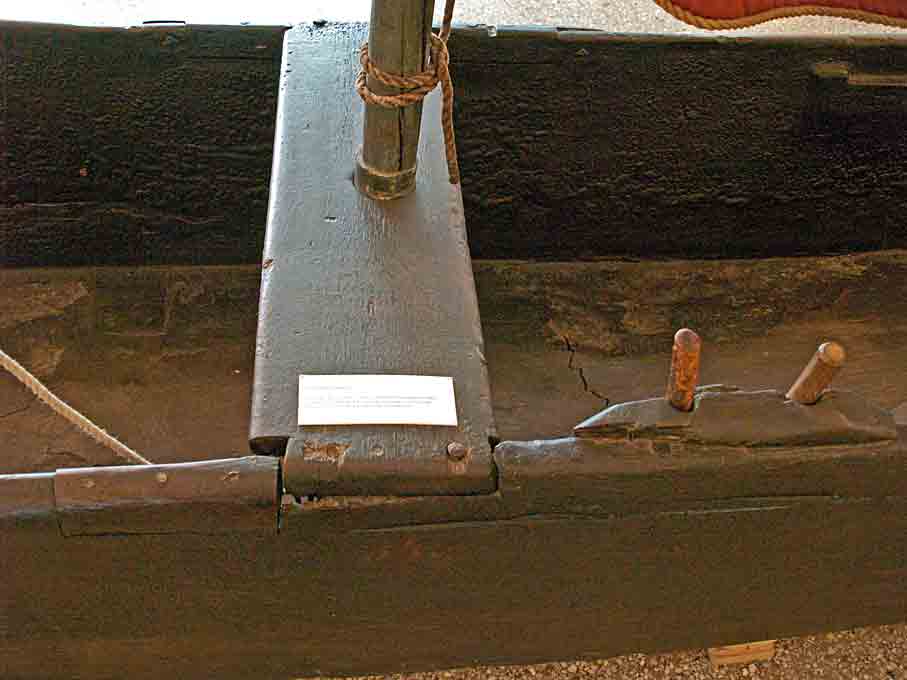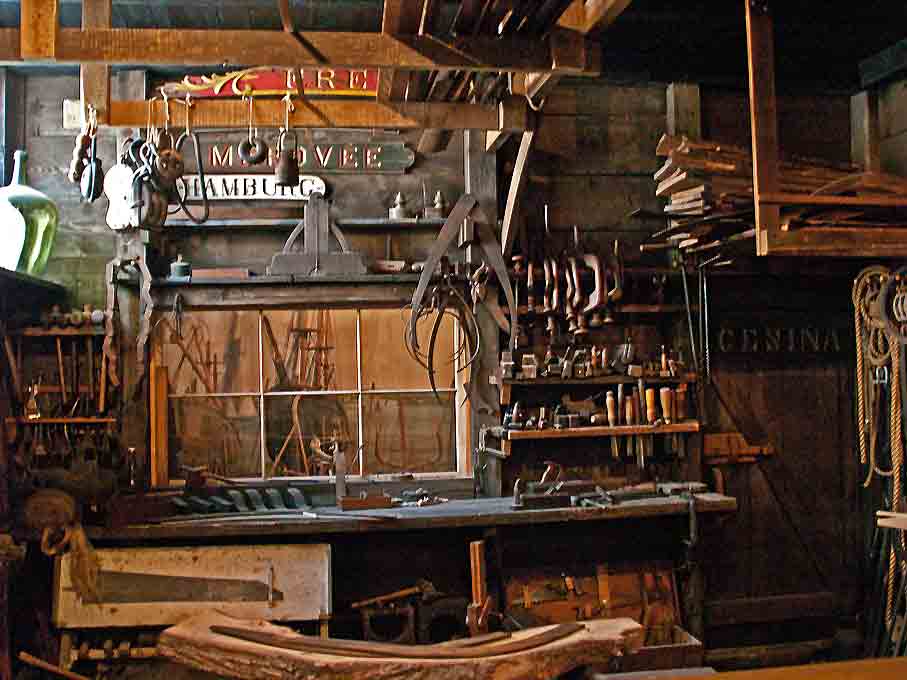Ship Models in the Altonaer Museum (Hamburg)
The museum was conceived right from the
beginning with an educational purpose in mind, explaining the
popular culture of the region, particularly also that of
seafaring, shipbuilding and fishing. To this end the museum
commissioned at the beginning of the 20th century a collection
of models of typical ships of sailing age to be built. The
models are based on either plans in the museum collection or
plans lent by local shipyards. Unfortunately, the latter were
apparently returned and subsequently lost during WWII, the flood
in 1962 or due to neglect. The models are all kept in the 1/24
scale and the 1/36 scale for the larger ones and built by local
older shipwrights, block makers, riggers and sailmakers. While
the prototypes in most cases had long disappeared, the model
builders would have grown up with them and hence would have
known late 19th building and rigging practices.
The other important convolut of models are those that formed part of the acclaimed 1908 fishing exhibition in Berlin and were first obtained from their owners, the seafish marketing association, as a permanent loan to the museum and subsequently were purchased. Some of the models are executed in a very large scale.
Sadly the museum recently was threatened with closure, as politicians and city administrators (and perhaps) do not seem to appreciate this aspect of cultural heritage very much. The non-seafaring cultural heritage related exhibits, such as those on the popular cultural of the region have disappeared largely from public display.
The other important convolut of models are those that formed part of the acclaimed 1908 fishing exhibition in Berlin and were first obtained from their owners, the seafish marketing association, as a permanent loan to the museum and subsequently were purchased. Some of the models are executed in a very large scale.
Sadly the museum recently was threatened with closure, as politicians and city administrators (and perhaps) do not seem to appreciate this aspect of cultural heritage very much. The non-seafaring cultural heritage related exhibits, such as those on the popular cultural of the region have disappeared largely from public display.
| Historical
note on flags flown on the models |
||||
| The King of Denmark was also the Duke
of Holstein. For this reason, Holstein formed part of
the State of Denmark, with Altona its second largest
city after Copenhagen. In 1864 attempts were made to
incorporate Holstein (and the Duchy of Schleswig) as
provinces into the Kingdom of Denmark violating the London Protocol.
As both, Schleswig and Holstein, were also part of the
Norddeutsche Bund, this resulted in the German-Danish
War. Thus ships from Holstein, including Altona, would
fly the Danebrog up to 1864 and the flag of the
Norddeutsche Bund thereafter, which in 1871 became the
flag of the German Empire. Ships sailing to the
Westindies, namely to what are now the US
Virgin Islands, which had been a Danish Colony
until 1917, were allowed to fly the swallow-tail
Danish naval flag, while ships sailing in the
Mediterranean had the King's monogram in the Danebrog
to make it more distinct from the Maltese flag. |
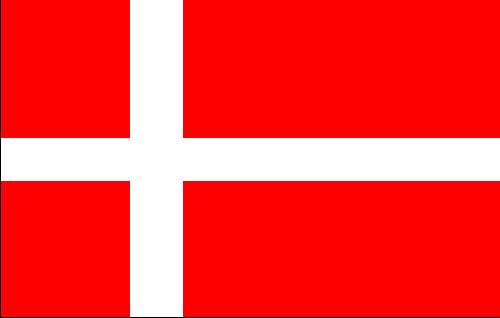 |
 |
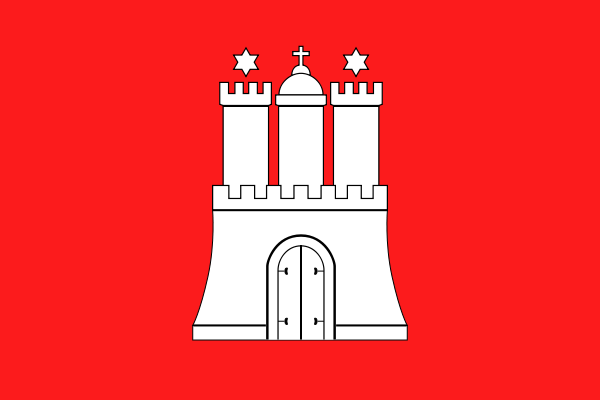 |
Altona
was an independent city, first in the State of Denmark
and then in the German Empire. It became part of
Hamburg only in 1938. Hamburg itself remained a free
city until 1871, when it became formally part of the
German Empire. However, until today it retained
autonomy as a state within the federal structure of
the German Empire and its various successors. Until
1871 Hamburg ships flew their own merchant flag. |
| Danebrog
(before 1864) |
Merchant flag of
the Norddeutsche Bund (1864-1871) and then the German
Empire (1871-1919) |
Merchant flag of
Hamburg (before 1871) |
||
